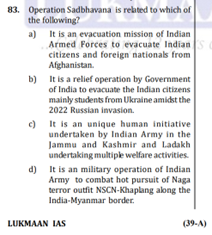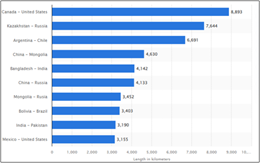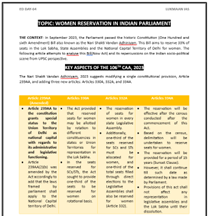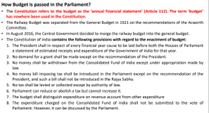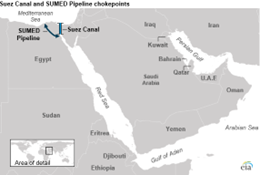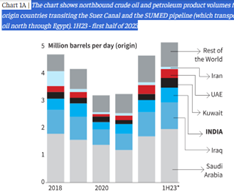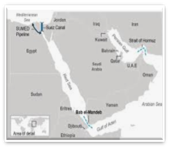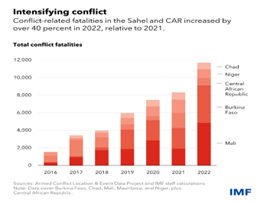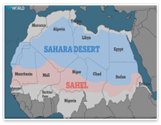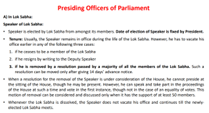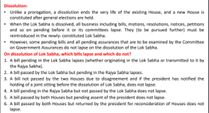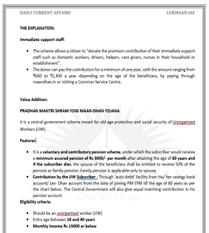| UPSC MCQs | LUKMAAN IAS (MATCHED) MCQs |
| Q.1 Consider the following statements:
Statement-I: The atmosphere is heated more by incoming solar radiation than by terrestrial radiation. Statement-II: Carbon dioxide and other greenhouse gases in the atmosphere are good absorbers of long wave radiation. Which one of the following is correct in respect of the above statements? (a) Both Statement-I and Statement-II are correct and Statement-I Statement-II explains (b) Both Statement-I and Statement-II are correct, but Statement-II does not explain Statement-I (c) Statement-I is correct, but Statement-II is incorrect (d) Statement-I is incorrect, but Statement-II is correct Answer: D Explanation: Statement-I is incorrect but Statement-II is correct Statement-I is incorrect: Insolation: · The earth’s surface receives most of its energy in short wavelengths. The energy received by the earth is known as incoming solar radiation which in short is termed as insolation. Terrestrial radiation: · The insolation received by the earth is in short wave forms and heats up its surface. · The earth after being heated itself becomes a radiating body and it radiates energy to the atmosphere in long wave form. · This energy heats up the atmosphere from below. This process is known as terrestrial radiation. Statement-II is correct: Heating up of atmosphere: · The long wave radiation is absorbed by the atmospheric gases particularly by carbon dioxide and the other greenhouse gases. Thus, the atmosphere is indirectly heated by the earth’s radiation. · As the amount of these greenhouse gases is increasing day by day, more of the terrestrial radiations are absorbed by these gases, enhancing the temperature of the earth further. Source: NCERT Class 11th |
PT 100 Batch practice Q.
Q. Consider the following statements: 1. Heating of the atmosphere is largely due to terrestrial radiation. 2. Formation of tropical cyclones involve advection. 3. Movement of land and sea breeze is due to convection. Which of the statements given above is/are correct? a) 1 only b) 1 and 2 only c) 1 and 3 only d) 1, 2 and 3 Answer: a) Explanation: ● Statement 1 is correct: Heating of atmosphere is largely due to terrestrial radiation (long-wave radiation from the heated earth surface). ● Statement 2 is incorrect: Formation of tropical cyclones involve convection currents (vertical heating of atmosphere). ● Statement 3 is incorrect: Movement of land and sea breeze is due to advection (The transfer of heat through horizontal movement of air is called advection).
|
| Q.2 Consider the following statements:
Statement-I: Thickness of the troposphere at the equator is much greater as compared to poles. Statement-II: At the equator, heat is transported to great heights by strong convectional currents. Which one of the following is correct in respect of the above statements? (a) Both Statement-I and Statement-II are correct and Statement-I Statement-II explains (b) Both Statement-I and Statement-II are correct, but Statement-II does not explain Statement-I (c) Statement-I is correct, but Statement-II is incorrect (d) Statement-I is incorrect, but Statement-II is correct Answer: A Explanation: Both Statement-I and Statement-II are correct and Statement-II is the correct explanation for Statement-I Layers of the atmosphere: · The atmosphere consists of different layers with varying density and temperature. · Density is highest near the surface of the earth and decreases with increasing altitude. · They are: troposphere, stratosphere, mesosphere, thermosphere and exosphere Troposphere: · The troposphere is the lowermost layer of the atmosphere. · Its average height is 13 km and extends roughly to a height of 8 km near the poles and about 18 km at the equator. · Thickness of the troposphere is greatest at the equator because heat is transported to great heights by strong convection currents. · This layer contains dust particles and water vapour.
· All changes in climate and weather take place in this layer. · The temperature in this layer decreases at the rate of 1° C for every 165 m of height. · This is the most important layer for all biological activity. Source: NCERT Class 11th |
PT 100 Batch practice Q.
Q. Assertion (A): Thickness of the troposphere is greater at the equator as compared to the poles. Reason (R): Gravitational force is more at the poles compared to the equator. In the context of the above two statements, which one of the following is correct? a) Both A and R are true but R is the correct explanation of A b) Both A and R are true but R is not the correct explanation of A c) A is true but R is false d) A is false but R is true Answer: C ● Thickness of the troposphere is greatest at the equator because heat is transported to great heights by strong convectional currents.
|
| Q.3 Consider the following:
1. Pyroclastic debris 2. Ash and dust 3. Nitrogen compounds 4. Sulphur compounds How many of the above are products of volcanic eruptions? (a) Only one (b) Only two (c) Only three (d) All four Answer: D Explanation: Products of volcanic eruptions: · The products of volcanic eruptions include the following: Lava flows, pyroclastic debris, ash, dust, gases and Nuee ardentes. · In addition to the gases that come out of volcanoes, large amounts of solid materials are also ejected. · The smaller particles of dust reach the highest levels in the atmosphere. · For strong vertical eruptions, dust can be propelled up into the stratosphere, above 17 kilometers. · At such heights, the suspended dust particles can block solar radiation, effectively by heating up the stratosphere while the lower troposphere cools causing short term effects. · Solid: The solid material of different sizes is ejected out of volcano during eruptions.They are called as ‘pyroclastic material’. These materials of varying sizes and grades are known differently based on their size, viz. Volcanic bombs,Lapilli or cinder, Volcanic Ash and volcanic dust. · Liquid: The most important product of volcanic eruption is magma.It is molten rock material consisting of mineral melt. It is. On average the temperature of magma ranges between 1000° and 1200° C. Molten rock material below the surface is called ‘magma’ and when it comes on the surface it is called ‘Lava’. It can be felsic (viscous) or basic (less viscous or fluid). · Gases: Water vapours form one of the most important part constituting of the total volcanic gases.These water vapours may come from the original magma or due to boiling of underground water in the volcanic area.Volcanic gas samples contain water (70 %), carbon dioxide (15 %) and Nitrogen (5 %) along with sulphur dioxide, hydrogen sulfide, carbon monoxide,hydrogen, hydrochloric acid, and methane, chlorine and argon. Source: https://epgp.inflibnet.ac.in/epgpdata/uploads/epgp_content/S000014ER/P000274/ |
| Q.4 Which of the following is/are correct inference/inferences from isothermal maps in the month of January?
1. The isotherms deviate to the north over the ocean and to the south over the continent. 2. The presence of cold ocean currents, Gulf Stream and North Atlantic Drift make the North Atlantic Ocean colder and the isotherms bend towards the north. Select the answer using the code given below: (a) 1 only (b) 2 only (c) Both 1 and 2 (d) Neither 1 nor 2 Answer: A Explanation: Statement 1 is correct: Distribution of Temperature: · In general the effect of the latitude on temperature is well pronounced on the map as shown below, as the isotherms are generally parallel to the latitude. · The deviation from this general trend is more pronounced in January than in July, especially in the northern hemisphere. · In the northern hemisphere the land surface area is much larger than in the southern hemisphere. · Hence, the effects of land mass and the ocean currents are well pronounced. · In January the isotherms deviate to the north over the ocean and to the south over the continent. Statement-II is incorrect: Gulf Stream and North Atlantic drift are warm currents. · This trend can be seen on the North Atlantic Ocean. · The presence of warm ocean currents, Gulf Stream and North Atlantic drift, make the Northern Atlantic Ocean warmer and the isotherms bend towards the north. · Over the land the temperature decreases sharply and the isotherms bend towards south in Europe.
Source: NCERT Class 11th Chapter |
PT100 Batch practice Q.
Q. In January month, isotherms over the North Atlantic Ocean bend towards the north. Which of the following is the reason for it? a) Westerly winds b) Polar easterlies c) Cold ocean current d) Warm ocean currents Answer: D Explanation: ● In January, the isotherms deviate to the north over the ocean and to the south over the continent. This can be seen on the North Atlantic Ocean. The presence of warm ocean currents, Gulf Stream and North Atlantic drift, make the Northern Atlantic Ocean warmer and the isotherms bend towards the north. |
| Q.5 Which of the following countries are well known as the two largest cocoa producers in the world?
(a) Algeria and Morocco (b) Botswana and Namibia (c) Côte d’Ivoire and Ghana (d) Madagascar and Mozambique Answer: C Explanation: The Ivory Coast and Ghana are by far the two largest producers of cocoa, accounting for more than 50 percent of the world’s cocoa. About Cocoa plantation: ● Climate Conditions: The natural habitat of the cocoa tree is in the lower storey of the evergreen rainforest, and climatic factors, particularly temperature and rainfall, are important in encouraging optimum growth. ● Temperature: Cocoa plants respond well to relatively high temperatures, with a maximum annual average of 30 – 32ºC and a minimum average of 18 – 21ºC. ● Rainfall: Variations in the yield of cocoa trees from year to year are affected more by rainfall than by any other climatic factor. Trees are very sensitive to a soil water deficiency. Rainfall should be plentiful and well distributed through the year. An annual rainfall level of between 1,500mm and 2,000mm is generally preferred. Dry spells, where rainfall is less than 100mm per month, should not exceed three months. ● Humidity: A hot and humid atmosphere is essential for the optimum development of cocoa trees. In cocoa producing countries, relative humidity is generally high: often as much as 100% during the day, falling to 70-80% during the night. ● Light & Shade: The cocoa tree will make optimum use of any light available and traditionally has been grown under shade. Its natural environment is the Amazonian forest which provides natural shade trees. Shading is indispensable in a cocoa tree’s early years. ● Production Areas: Cocoa is produced in countries in a belt between 10ºN and 10ºS of the Equator, where the climate is appropriate for growing cocoa trees. ● The three current largest producing countries are Côte d’Ivoire, Ghana and Ecuador. (From the above explained requirements for the cultivation of cocoa, it can be derived that cocoa grows in the equatorial regions very efficiently, hence answer of the question could be reached at by eliminating the other options not lying in the equatorial belt region)
Source: https://www.newindianexpress.com/states/kerala/2024/Jan/17/kerala-cocoa-farmers-cheer-as-prices-hit-44-year-high |
|
| Q.6 With reference to the Himalayan rivers joining the Ganga downstream of Prayagraj from West to East, which one of the following sequences is correct?
(a) Ghaghara – Gomati – Gandak – Kost (b) Gomati – Ghaghara – Gandak – Kosi (c) Ghaghara – Gomati – Kosi – Gandak (d) Gomati Ghaghara – Kosi – Gandak Answer: B Explanation: Ganga river system: · The Ganga river has a length of 2,525 km. · It is shared by Uttarakhand (110 km) and Uttar Pradesh (1,450 km), Bihar (445 km) and West Bengal (520 km). The Ganga basin covers about 8.6 lakh sq. km area in India alone. · The Ganga river system is the largest in India having a number of perennial and non-perennial rivers originating in the Himalayas in the north and the Peninsula in the south, respectively. · The Son is its major right bank tributary. · The important left bank tributaries are the Ramganga, the Gomati, the Ghaghara, the Gandak, the Kosi and the Mahananda. · The river finally discharges itself into the Bay of Bengal near the Sagar Island.
Source: NCERT Class 11th |
PT 100 batch (Mapping class- India ) |
| Q.7 Consider the following statements:
Statement-I: Rainfall is one of the reasons for the weathering of rocks. Statement-II: Rain water contains carbon dioxide in solution. Statement-III: Rain water contains atmospheric oxygen. Which one of the following is correct in respect of the above statements? (a) Both Statement-II and Statement-III are correct and both of them explain Statement-I (b) Both Statement-II and Statement-III are correct, but only one of them explains Statement-I (c) Only one of the Statements II and III is correct and that explains Statement-I (d) Neither Statement-II nor Statement-III is correct Answer: A Explanation: Both Statement-II and Statement-III are correct and both of them explain Statement-I Weathering: · Weathering is defined as mechanical disintegration and chemical decomposition of rocks through the actions of various elements of weather and climate. · Weathering processes are conditioned by many complex geological, climatic, topographic and vegetative factors. Climate is of particular importance. · There are three major groups of weathering processes: (i) chemical; (ii) physical or mechanical; (iii) biological weathering processes. Chemical Weathering Processes: A group of weathering processes like solution, carbonation, hydration, oxidation and reduction act on the rocks to decompose, dissolve or reduce them to a fine clastic state through chemical reactions by oxygen, surface and/or soil water and other acids. Role of rainwater in weathering process: · Rainwater plays a significant role in the process of weathering, which is the breakdown of rocks and minerals at the earth’s surface. · There are two main types of weathering influenced by rainwater: chemical weathering and physical weathering. Chemical Weathering 1. Dissolution: ○ Rainwater, which is slightly acidic due to dissolved carbon dioxide forming carbonic acid, can dissolve soluble minerals. For example, limestone (composed of calcium carbonate) can dissolve in acidic rainwater, forming calcium bicarbonate which is carried away in solution. 2. Hydrolysis: ○ Rainwater reacts with minerals in rocks to form new minerals and soluble salts. For example, feldspar in granite reacts with rainwater to form clay minerals and soluble ions like potassium and silica. 3. Oxidation: ○ Rainwater can facilitate oxidation reactions, especially in rocks containing iron-bearing minerals. ○ Example – The iron in minerals like pyrite reacts with oxygen and water to form iron oxides (rust), which weakens the rock structure. Source: NCERT Class 11th |
Weathering process and their types are explained by the faculty in Foundation class in detail. Here, Carbonation and Oxidation processes are relevant in Chemical Weathering. |
| Q.8 Consider the following countries:
1. Finland 2. Germany 3. Norway 4. Russia How many of the above countries have a border with the North Sea? (a) Only one (b) Only two (c) Only three (d) All four Answer: B Explanation: Russia and Finland do not touch the North Sea.
|
DTRS Questions (August 2023)
Q. Which one of the following countries does not share borders with the North Sea? a) Belgium b) Netherlands c) Denmark d) Finland Ans. D Context- The U.K. Prime Minister has recently backed plans for new fossil fuel drilling off Britain’s coast in the North Sea which has raised apprehensions for the environment experts even as the world continues its stride towards irreversible climate change. The 1958 Geneva Convention on the Continental Shelf was the first international legislation to establish the rights of countries over the continental shelves adjacent to their coastlines and paved the way for exploration in the North Sea. The treaty came into force in 1964, shortly after the U.K. Parliament passed the Continental Shelf Act in April of the same year. The Act provides for exploration and exploitation of the continental shelf based on the 1958 convention. It delineated the jurisdiction the U.K. had over oil and gas resources under the seabed near its shores. Drilling in seas and oceans for fossil fuels not only aggravates the threat of climate change but also warms oceans and raises sea levels. Offshore drilling is associated with a direct risk to marine biodiversity, as well as with indirect risks to coral reefs, shellfish and the marine ecosystem from acidic waters because of carbon pollution settling into oceans. Explanation- Geographically, the North Sea lies between England and Scotland on its west, the Netherlands, Belgium, and France on its south, and Norway, Denmark, and Germany on its east. Finland does not share maritime borders with North Sea.
Source- Today’s Paper News, Breaking News, Top headlines – The HinduBusinessLine |
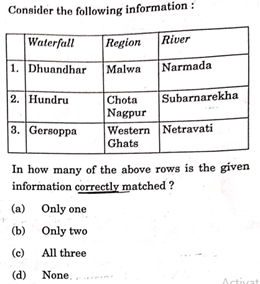
Answer: A Explanation: Only pair 2 is matched correctly Pair 1 is matched incorrectly: Dhuandhar waterfall: · The Dhuandhar Falls is a waterfall in Jabalpur district in the Indian state of Madhya Pradesh, and is the biggest fall in India. ● The Dhuandhar Falls is located on the Narmada river in Bhedaghat and are 30 meters high. ● Jabalpur district is not present in Malwa region of Madhya Pradesh. Malwa region is located in the north-west Madhya Pradesh while Jabalpur district is located in south east of Madhya Pradesh. Pair 2 is matched correctly: Hundru waterfall: · The Hundru Falls is a waterfall located in Ranchi district in Chota Nagpur Plateau region in the Indian state of Jharkhand. · It is one of the most famous tourist places in the region. · The Hundru Falls Ranchi is created on the course of the Subarnarekha River, where is falls from a height of 320 feet creating the highest waterfalls on of the state. Pair 3 is matched incorrectly: Gersoppa waterfall: · Jog Falls, a major attraction in Karnataka, is located in the Shimoga district of Karnataka. · Also known by alternative names of Gerusoppe Falls, Gersoppa Falls, and Jogada Gundi. · Made on the river Sharavathi. · It is one of the highest waterfalls in India. |
Panchasutra AIPMT Test-5
Q.Consider the following pairs:
How many of the above pairs are correctly matched? a) Only one b) Only two c) Only three d) All four Answer: B Explanation:
|
||||||||||||||||||||
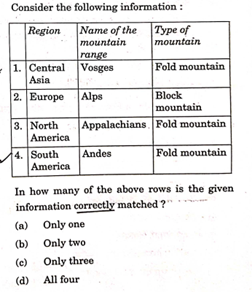
Answer: B Explanation: Pair 3 and 4 are matched correctly Pair 1 is matched incorrectly: Vosges: · Vosges Mountain Range is a low orogenic block mountain range located in eastern France, near its border with Germany. · The highest point of this mountain range is Grand Ballon, which is entirely located in France. · It houses Ballons des Vosges National Park, Northern Vosges Regional Nature Park, and Palatinate Forest-North Vosges Biosphere Reserve.
Pair 2 is matched incorrectly: The Alps: ● The mountains were formed as the African and Eurasian tectonic plates collided. ● Extreme folding caused by the event resulted in marine sedimentary rocks rising by thrusting and folding into high mountain peaks such as Mont Blanc (4,810 m) (French–Italian border). ● The Alpine region area contains about a hundred peaks higher than 4,000 m, known as the four-thousanders.
Pair 3 is matched correctly: Appalachians: · The Appalachian Mountains, often simply called the Appalachians, are an extensive mountain range that spans the eastern part of North America, from Newfoundland and Labrador in Canada to Alabama in the United States. · They are among the oldest mountain ranges in the world. · The Appalachians are also very old fold mountains which were formed even before the breakup of Pangaea. They were formed due to the collision between North America and Europe.
Pair 4 is matched correctly: The Andes: · The Andes are the world’s longest mountain chain. · They stretch along the west coast of South America. · Here, the Nazca plate is moving down below the South American plate. · The Andes are mostly being folded up from the rocks of the South American plate.
|
Takkar Test 6
|
| Q.11 Consider the following airports:
1. Donyi Polo Airport 2. Kushinagar International Airport 3. Vijayawada International Airport In the recent past, which of the above have been constructed as Greenfield projects? (a) 1 and 2 only (b) 2 and 3 only (c) 1 and 3 only (d) 1, 2 and 3 Answer: A Explanation: Government of India has accorded ‘In-Principle’ approval for setting up of 21 new Greenfield Airports namely– · Mopa in Goa · Navi Mumbai, Shirdi and Sindhudurg in Maharashtra · Kalaburagi, Vijayapura, Hassan and Shivamogga in Karnataka · Dabra (Gwalior) in Madhya Pradesh · Kushinagar and Noida (Jewar) in Uttar Pradesh (Option 2 is correct) · Dholera and Hirasar in Gujarat · Karaikal in Puducherry · Dagadarthi, Bhogapuram and Orvakal (Kurnool) in Andhra Pradesh · Durgapur in West Bengal · Pakyong in Sikkim · Kannur in Kerala · Hollongi (Itanagar), also known as Donyi Polo Airport, in Arunachal Pradesh (Option 1 is correct) · Vijayawada Airport is not in the above list of greenfield projects, so Option 3 is not correct. Out of these, 11 Greenfield airports viz. Durgapur,Shirdi, Kannur, Pakyong, Kalaburagi, Orvakal(Kurnool), Sindhudurg, Kushinagar, Itanagar, Mopa and Shivamogga have been operationalised as of · Apart from Greenfield airport development, Government is also upgrading the existing airports. · Upgradation of airports as international airport is undertaken by Airports Authority of India (AAI) and concerned airport operators from time to time depending upon commercial viability, traffic demand, availability of land etc. · Since 2014, 4 airports namely Tirupati, Vijayawada, Kushinagar and Mopa Airports have been declared as International Airports. · With this, the number of international airports have increased to 30. Source: 1. https://pib.gov.in/Pressreleaseshare.aspx?PRID=1877228 2. https://pib.gov.in/PressReleaseIframePage.aspx PRID=1897659#:~:text=646%20crore)Kushinagar%20(project%20cost, Mopa%20airports%20are%20International%20airports. &text=After%20deregulation%20of%20airline%20sector,nor%20regulated%20by% |
| Q.12 With reference to “water vapour”, which of the following statements is/are correct?
1. It is a gas, the amount of which decreases with altitude. 2. Its percentage is maximum at the poles. Select the answer using the code given below: (a) 1 only (b) 2 only (c) Both 1 and 2 (d) Neither 1 nor 2 Answer: A Explanation: Water vapour: · Water vapour is also a variable gas in the atmosphere, which decreases with altitude. Ø So, statement 1 is correct. · In the warm and wet tropics, it may account for four per cent of the air by volume, while in the dry and cold areas of desert and polar regions, it may be less than one per cent of the air. · Water vapour also decreases from the equator towards the poles. Ø So, statement 2 is incorrect. · It also absorbs parts of the insolation from the sun and preserves the earth’s radiated heat. · It thus, acts like a blanket allowing the earth neither to become too cold nor too hot. · Water vapour also contributes to the stability and instability in the air. |
PT100 Batch practice Q.
Q. In troposphere, which of the following goes on decreasing from earth surface to the higher altitudes? 1. Atmospheric temperature 2. Atmospheric pressure 3. Atmospheric density 4. Absolute humidity Select the correct answer using the code given below: a) 1 and 2 only b) 1, 2 and 3 only c) 1, 2 and 4 only d) All of them Answer: D Explanation: ● The temperature in this layer decreases at the rate of 1°C for every 165m of height. ● Atmosphere is more dense near the earth surface due to gravitational field of earth which hold the air near to it. Therefore, density is highest near the surface of the earth and decreases with increasing altitude. ● High density of air leads to high atmospheric pressure. ● Water vapour is a variable gas in the atmosphere which decreases with altitude. |
| Q.13 Consider the following description:
1. Annual and daily range of temperatures is low. 2. Precipitation occurs throughout the year. 3. Precipitation varies between 50 cm-250 cm. What is this type of climate? (a) Equatorial climate (b) China type climate (c) Humid subtropical climate (d) Marine West coast climate Answer: A Explanation: Equatorial climate: · Equatorial Climate Regions are hot and wet all year, resulting in a humid climate. ● Precipitation is heavy and well distributed throughout the year. ● Annual average is always above 150 cm. In some regions the annual average may be as high as 250 – 300 cm. ● It is important to note here that the amount of rainfall is lowest in the month of August in this climatic region which can fall even to just 50 cm. The region gets its highest rainfall mostly in the month of March. · Temperatures are fairly consistent all year, with only a few degrees of variation. · Seasons do not exist. Source: G C Leong |
|
| Q.14 With reference to “Coriolis force”, which of the following statements is/are correct?
1. It increases with increase in wind velocity. 2. It is maximum at the poles and is absent at the equator. Select the answer using the code given below: (a) 1 only (b) 2 only (c) Both 1 and 2 (d) Neither 1 nor 2 Answer: C Explanation: Coriolis force: · The rotation of the earth about its axis affects the direction of the wind. · This force is called the coriolis force after the French physicist who described it in 1844. · It deflects the wind to the right direction in the northern hemisphere and to the left in the southern hemisphere. · The deflection is more when the wind velocity is high. Ø So, statement 1 is correct. · The Coriolis force is directly proportional to the angle of latitude. · It is maximum at the poles and is absent at the equator. Ø So, statement 2 is correct. · The Coriolis force acts perpendicular to the pressure gradient force. · The pressure gradient force is perpendicular to an isobar. · The higher the pressure gradient force, the more is the velocity of the wind and the larger is the deflection in the direction of wind. · As a result of these two forces operating perpendicular to each other, in the low-pressure areas the wind blows around it. · At the equator, the Coriolis force is zero and the wind blows perpendicular to the isobars. · The low pressure gets filled instead of getting intensified. · That is the reason why tropical cyclones are not formed near the equator. |
| Q.15 On June 21 every year, which of the following latitude(s) experience(s) a sunlight of more than 12 hours?
1. Equator 2. Tropic of Cancer/ 3. Tropic of Capricorn 4. Arctic Circle Select the correct answer using the code given below: (a) 1 only (b) 2 only (c) 3 and 4 (d) 2 and 4 Answer: D Explanation: · 21st June is the longest day in the Northern Hemisphere, technically this day is referred to as Summer solstice. · In Delhi located in the northern hemisphere, the day length is around 14 hours. · Most of the areas north of the equator have a day length of more than 12 hours. · The amount of light received by a specific area in the Northern Hemisphere during the summer solstice depends on the latitudinal location of the place. · 21st June is also observed as the International Yoga Day.
|
| Q.16 One of the following regions has the world’s largest tropical peatland which holds about three years worth of global carbon emissions from fossil fuels; and the possible destruction of which can exert detrimental effect on the global climate. Which one of the following denotes that region?
a) Amazon basin b) Congo basin c) Kikori basin d) Rio de la Plata basin Answer. B Context: The Republic of Congo, as the initiator of the alliance between the Three Great Basins, hosted the Founding Summit of the Amazon – Congo – Borneo – Mekong – Southeast Asia, Summit of the Three Basins, Biodiversity Ecosystems, and Tropical Forests (S3B EBFT), in October 2023 in Brazzaville, Congo. Explanation: The Congo Basin is home to the world’s largest tropical peatlands, along with Brazil and Indonesia. The peat swamp forest of the Congo Basin stores around 29 billion tons of carbon – approximately equivalent to three years’ worth of global greenhouse gas emissions – while the Basin as a whole absorbs nearly 1.5 billion tons of carbon dioxide a year. The Basin stretches across six countries- Cameroon, Central African Republic, Democratic Republic of the Congo, Congo, Equatorial Guinea and Gabon. Several countries have recognized the importance of peatlands and have made commitments to protect the imperiled ecosystems. At the Global Peatlands Initiative meeting held in Brazzaville in 2018, the Democratic Republic of the Congo, Congo and Indonesia signed the Brazzaville Declaration, which promotes better management and conservation of the Cuvette Centrale region in the Congo Basin, one of the world’s largest tropical peatlands.
Peatlands are an effective carbon sink – they absorb more carbon from the atmosphere than they produce. Carbon sinks are essential to combating the climate crisis and protecting planetary health. However, peatlands and other carbon sinks are already at risk of collapse due to climate change, nature and biodiversity loss, and pollution and waste, warns UNEP’s Becoming #GenerationRestoration report. Without the critical services these ecosystems provide, the climate and nature crisis will only worsen. Source- Critical ecosystems: Congo Basin peatlands (unep.org); Brazzaville Summit of the Three Basins ends with a declaration (downtoearth.org.in) |
DTRS 27 October, 2023
Q. Consider the following statements: 1. Brazzaville Summit aims to help enhance the contribution of all types of forests and trees outside forests to the 2030 Agenda for Sustainable Development. 2. The Collaborative Partnership on Forests (CPF) aims to strengthen governance for three vital ecosystems: the Amazon, Congo, and Borneo-Mekong. Which of the above given statements is/are correct? a) 1 only b) 2 only c) Both 1 and 2 d) Neither 1 nor 2 Answer: D Explanation: Statement 1 is incorrect: Brazzaville Summit: · It is also known as Three Basins Summit. · Aim: Initiative is aimed at strengthening governance for three vital ecosystems: the Amazon, Congo, and Borneo-Mekong/ South East Asia. · Saving the tropical forests and ecosystems has become the main objectives of the Summit. · Recently a Report – “The Three Basins Threat Report: Fossil Fuel, Mining, and Industrial Expansion Threats to Forests and Communities,” highlights the persistent challenges faced by tropical forests in these regions due to fossil fuel, mining, and extractive industry expansion. · The first Summit of the Three Tropical Forest Basins was held in Brazzaville in 2011 and resulted in the Declaration of the Summit of the Three Tropical Forest Basins, which recognised the need to establish a platform to promote cooperation among the countries of the three basins. Statement 2 is incorrect: The Collaborative Partnership on Forests (CPF)- · CPF is a partnership of 16 global organizations chaired by the United Nations Food and Agriculture Organization (FAO), has launched the Joint Call to Action for Forests towards 2030. · Aim: To highlight the need for increased action and political commitment to implement forest solutions in pursuit of the United Nations-mandated Sustainable Development Goals (SDG). · Mission: Ø The mission of the CPF is to help enhance the contribution of all types of forests and trees outside forests to the 2030 Agenda for Sustainable Development and other internationally agreed development goals, promote the sustainable management of all types of forests and to strengthen long-term political commitment to that end. · Recently, CPF has launched the Joint Call to Action for Forests towards 2030 which has four focal areas: I. Implementation and action II. Data, science and innovation III. Finance for forests IV. Communication and awareness-raising. Source: DowntoEarth |
| Q.17 With reference to perfluroalkyl and polyfluroalkyl substances (PFAS) that are used in making many consumer products, consider the following statements:
1. PFAS are found to be widespread in drinking water, food and food packaging materials. 2. PFAS are not easily degraded in the environment. 3. Persistent exposure to PFAS can lead to bioaccumulation in animal bodies. Which of the statements given above are correct? a) 1 and 2 only b) 2 and 3 only c) 1 and 3 only d) 1, 2 and 3 Answer. D Explanation: Statement 1 is correct: PFAS can be present in our water, soil, air, and food as well as in materials found in our homes or workplaces, including: · Drinking water – in public drinking water systems and private drinking water wells. · Food – for example in fish caught from water contaminated by PFAS and dairy products from livestock exposed to PFAS. · Food packaging – for example in grease-resistant paper, fast food containers/wrappers, microwave popcorn bags, pizza boxes, and candy wrappers. · Soil and water at or near waste sites · Fire extinguishing foam · Manufacturing or chemical production facilities that produce or use PFAS – for example at chrome plating, electronics, and certain textile and paper manufacturers. · Household products and dust – for example in stain and water-repellent used on carpets, upholstery, clothing, and other fabrics; cleaning products; non-stick cookware; paints, varnishes, and sealants. · Personal care products – for example in certain shampoo, dental floss, and cosmetics. · Biosolids – for example fertilizer from wastewater treatment plants that is used on agricultural lands. Statement 2 is correct: These chemicals do not degrade easily in the environment. PFAS’ indestructability comes from their carbon-flouride bonds, one of the strongest types of bonds in organic chemistry. Statement 3 is correct: Because PFAS stick to small proteins in the blood, these chemicals have been shown to cause harm pretty much throughout the body where they can remain for years. They’re toxic, even in minute amounts. PFAS are persistent, they bioaccumulate up the food chain — just as DDT did in the 1960s, severely affecting bird species.
Source- IIT Madras study reveals presence of ‘forever chemicals’ in Chennai lakes, drinking water – The Hindu; PFAS ‘forever chemicals’ harming wildlife the world over: Study (mongabay.com); EPA |
DTRS 7 FEBRUARY, 2023
Q. Which of the following statements is not correct with reference to ‘Forever Chemicals’, currently mentioned in news? a) They are a group of fluorinated chemicals. b) They are not easily absorbed through the skin. c) They are used in a range of everyday products, including food packaging, clothing and cosmetics. d) They have been linked to cancer, reproductive and immune system harm, and other diseases. PANCHSUTRA 4 Q. Consider the following: 1. Dental floss 2. Grease-resistant clothing 3. Microwave popcorn bags 4. Non-stick cookware 5. Bandages In making of how many of the above are ‘Per-and-polyfluoroalkyl substances’, also known as ‘Forever Chemicals’ used? a) Only two b) Only three c) Only four d) All five Answer. D Explanation: PFAS (per- and polyfluoroalkyl substances) dubbed as ‘forever chemicals’ are endocrine-disrupting chemicals (EDCs). PFAS are a vast family of synthetic chemicals found in everyday products such as non-stick cookware, upholstery, food packaging, water or stain resistant coatings, and industrial materials. These chemicals do not degrade easily in the environment. PFAS chemicals help products resist heat, oil, stains, grease and water. These contaminants are persistent in the environment, and could lead to adverse health effects such as liver damage, low infant birth weights, hormonal imbalance, fertility issues, immune system effects, and even cancer. Current methods to destroy PFAS require harsh treatments, such as incineration at extremely high temperatures or irradiating them with ultrasonic waves. However, incineration isn’t always foolproof. PFAS’ indestructability comes from their carbon-flouride bonds, one of the strongest types of bonds in organic chemistry. Source- Scientists find simple, safe method to destroy ‘forever chemicals’ – The Hindu; Miscellaneous sources |
| Q.18 Consider the following:
1. Carabid beetles 2. Centipedes 3. Flies 4. Termites 5. Wasps Parasitoid species are found in how many of the above kinds of organisms? a) Only two b) Only three c) Only four d) All five Answer. B Explanation: Options 1, 3 and 5 are correct only. Parasitoid species are those insects whose larvae feed and develop within or on the bodies of other arthropods. Each parasitoid larva develops on a single individual and eventually kills that host. Parasitoids target other invertebrates, although a few (e.g. a species of rove beetle) are known to infect snake eggs. Parasitoids usually target certain groups, e.g. spider wasps infect spiders and cuckoo wasps infect other wasps. Some even specialise in targeting hosts that are already infected. Most parasitoids are wasps, but some flies and a small number of beetles, moths, lacewings, and even one caddisfly species have evolved to be parasitoids. Carabid beetles, commonly understood as ground beetles, have a range of food habits from being ectoparasitoids on specific insect hosts to obligatory carnivores, herbivores and omnivores. Option 2 is incorrect: Centipedes are not parasitoid species. Rather some nematodes like gordian worms show parasitoid behaviour. Option 4 is incorrect: Termites not parasitoids. They are social insects that feed on wood and plant materials, relying on symbiotic protozoa and bacteria in their guts to digest their food. Source- New species of parasitoid wasp discovered in Western Ghats – The Hindu; miscellaneous |
DTRS 8 March, 2024
Q. The term ‘Indopria’ seen in the media refers to: a) a newly developed type of sustainable fuel cell b) a political movement in Southeast Asia c) a new genus and species of parasitoid wasp discovered in India d) a social media platform popular in India Answer: C Context: A team of researchers at the Zoological Survey of India (ZSI), Kolkata, has discovered a new genus and species of parasitoid wasp, a significant find after nearly two decades. Explanation: · New genus of parasitoid wasp discovered named Indopria, with ‘Indo’ representing India and ‘pria’ from Latin meaning ‘little wasp. · The species was discovered during India’s 75th Independence Day celebrations, hence the inclusion of ‘Indo to signify the country and the species name ‘angulata’ (Latin) refers to the specialised characteristic of its wings. · Indopria is classified within the tribe Diapriini, identified through an integrative taxonomic approach combining morphological data and high genetic divergence within the tribe. · India boasts over a hundred diapriid wasp species, with initial research indicating the distribution of Indopria angulata in Odisha, West Bengal, and the Andaman islands. Hence, Option (c) is the correct answer. |
| Q.19 Consider the following plants:
1. Groundnut 2. Horse-gram 3. Soybean How many of the above belong to the pea family? (a) Only one (b) Only two (c) All three (d) None Answer: C Explanation: All are from the family of pea. Groundnut: · The groundnut belongs to the pea and bean family and is a legume. · The groundnut is the only nut that grows below the earth. · The groundnut plant is a variable annual herb, which grows upto 50 cm. in height. · The flowers of the plant develop a stalk which enters into the soil, forms a pod containing generally two seeds. Soybean: · Soybean is a flowering plant (angiosperm) and is a dicot (eudicot), in the Fabaceae, the pea family, a large and economically important family containing species that are used for food, medicine and lumber plus many species that are important ecologically. Horse-gram: · Botanical name: Macrotyloma uniflorum · Family: Fabaceae (Pea family) · Synonyms: Dolichos benadirianus About: Horse Gram is of Indian origin, it is now cultivated in Asia, Africa, West Indies and southern USA as a pulse crop and for fodder. The whole seeds of horse-gram are generally utilized as cattle feed.However, it is consumed as a whole seed, as sprouts, or as awhole meal in India. Source: Groundnut: https://agriexchange.apeda.gov.in/product_profile/prd_profile.aspx?categorycode=0501#:~:text=The%20groundnut%20belongs Soybean: species%20that%20are%20important%20ecologically. Horse-gram: https://www.flowersofindia.net/catalog/slides/Horse%20Gram.html |
| Q.20 Consider the following statements:
Statement I: The Indian Flying Fox is placed under the ‘vermin’ category in the Wildlife (Protection) Act, 1972. Statement II: The Indian Flying Fox feeds on the blood of other animals. Which one of the following is correct in respect of the above statements? a) Both Statement-I and Statement-II are correct and Statement II explains Statement-I b) Both Statement-I and Statement-II are correct, but Statement II does not explain Statement-I c) Statement-I is correct, but Statement-II is incorrect d) Statement-I is incorrect, but Statement-II is correct Answer. C Explanation: Statement I is correct but statement II is incorrect. Indian Flying Fox is the largest of all bats found in Indian mainland. The nectar and fruit-eating flying fox (Pteropus giganteus) is generally considered a ‘vermin’ as they raid orchards. It had a similar official status under Schedule V of the Wildlife (Protection) Act of 1972 until it was put on the Schedule II list entailing a higher degree of protection. Indian flying foxes maintain a frugivorous diet, supplementing it with insects as well as flowers, containing juice and nectar. Although their favourite fruits are figs, the animals also consume mango, guava, bananas, and various cultivated fruits. There are no blood sucking bats found in India and Vampire Bats are found only in South America. Source- Flying fox bats for vigilance while roosting – The Hindu; Understanding roosting habits of the Indian flying fox to improve conservation (mongabay.com) |
| Q.21 The organisms “cicada, froghopper and pond skater” are:
a) Birds b) Fish c) Insects d) Reptiles Answer. C Explanation: Cicada, froghopper and pond skater are insects. Cicada (family Cicadidae), family of more than 3,000 species of sound-producing insects. Cicadas are found in tropical and temperate areas worldwide and occur in deserts, grasslands, and forests. Froghopper, (family Cercopidae), any of numerous species of small (less than 1.5 cm [0.6 inch] long) hopping insects (order Homoptera), worldwide in distribution, that produce a frothy substance known as spittle. Pond skater or Gerridae, are insects that can walk on water due to their hydrophobic legs and distributed body weight. Source- All about true bugs – Frontline (thehindu.com); Commonly-found cicada species sheds its foreign tag to embrace an Indian identity – The Hindu |
DTRS 19 JULY, 2023
Q. In the context of Cicada species, consider the following statements: 1. They are winged insects famous for their rasping songs used to attract mates or as alarm calls. 2. They are only found in western part of India. 3. They are used in traditional medicine, ritual and economic symbols, and as a source of food. How many statements given above are correct? a) Only one b) Only two c) All three d) None Answer: B Explanation: Statement 1 is correct: Cicadas are winged insects famous for their rasping songs used to attract mates or as alarm calls. Statement 2 is incorrect: The first detailed catalogue of the cicadas of India and surrounding countries in more than a century has been published by researchers from Bangalore. This catalogue provides descriptions of 281 species from India, Bangladesh, Bhutan, Myanmar, Nepal and Sri Lanka. Statement 3 is correct: Cicadas have been used in traditional medicine, ritual and economic symbols, and as a source of food. Their song was once thought to predict weather changes. |
| Q.22 Consider the following statements:
Statement-I: Many chewing gums found in the market are considered a source of environmental pollution. Statement-II: Many chewing gums contain plastic as gum base. Which one of the following is correct in respect of the above statements? a) Both Statement-I and Statement-II are correct and Statement II explains Statement-I b) Both Statement-I and Statement-II are correct, but Statement II does not explain Statement-I c) Statement-I is correct, but Statement-II is incorrect d) Statement-I is incorrect, but Statement-II is correct Answer. A Explanation: Statement-I and Statement II are correct and Statement-II explains Statement-I: An ingredient listed as “gum base” in many gum formulas is plastic, and it’s the aspect of the gum that gives it its chewiness. Most supermarket gum’s gum base is a mix of plastic and different chemicals, including polyethylene, which can be found in plastic bags and bottles. After chewing, most individuals throw the waste part of chewing gum everywhere, resulting in environmental trash known as ‘gum pollution. Each year, chewing gum generates more than 105 tonnes of “plastic” garbage. Thus, the discarded non-biodegradable residue of the gum produces plastic pollution. Gud Gum emerged as India’s pioneer confectionary ushering in an era of plastic-free chewing gums in 2024. Gud gum contains natural ingredients such as chickle gum as base (natural gum obtained from sap of sapodilla tree), natural sweeteners like xylitol or stevia, natural favours and other plant-based additives. Source- (PDF) Improper Disposal of Non-biodegradable Chewing Gum is One of the Biggest Threats to Our Ecology: A Review (researchgate.net); Unwrapping Gud Gum: India’s First Plastic-Free Chewing Gum – Blog | Sonisvision |
| Q.23 Consider the following pairs:
Country Animal found in its natural habitat 1. Brazil Indri 2. Indonesia Elk 3. Madagascar Bonobo How many of the pairs given above are correctly matched? a) Only one b) Only two c) All three d) None Answer. D Explanation: 1. Madagascar – Indri
The indri also known as the babakoto, is the largest species of lemur found only on the island of Madagascar. They are tailless primates with a distinctive black and white coat, large eyes, and round ears. 2. North America and Central Asia – Elk
ELK: the largest and most advanced subspecies of red deer (Cervus elaphus), found in North America and in high mountains of Central Asia. It is a member of the deer family, Cervidae (order Artiodactyla). Recent genetic studies suggest that the “red deer” may be three species: the European red deer, the Tibetan–West Chinese red deer, and the elk. 3. Democratic Republic of Congo – Bonobo
Bonobos are found only in the Democratic Republic of Congo. They were considered a subspecies of chimpanzee until 1933,but later they were classified separately. They have slimmer bodies, longer limbs and smaller heads as compared to chimpanzee. They are considered an endangered species of ape in DRC. Source- Bonobos, the ‘hippy apes’, may not be as peaceful as once thought (mongabay.com); Miscellaneous |
| Q.24 Consider the following statements regarding World Toilet Organization:
1. It is one of the agencies of the United Nations. 2. World Toilet Summit, World Toilet Day and World Toilet College are the initiatives of this organization, to inspire action to tackle the global sanitation crisis. 3. The main focus of its function is to grant funds to the least developed countries and developing countries to achieve the end of open defecation. Which of the statements given above is/are correct? (a) 2 only (b) 3 only (c) 1 and 2 (d) 2 and 3 Answer: A Statement 1 is incorrect: It is not among one of the agencies of the United Nations. Specialized agencies and related organizations maintaining liaison offices at Headquarters · Food and Agriculture Organization of the United Nations · International Atomic Energy Agency · International Criminal Court · International Fund for Agricultural Development · International Labour Organization · International Monetary Fund · International Organization for Migration · International Seabed Authority · International Telecommunication Union · International Tribunal for the Law of the Sea · Preparatory Commission for the Comprehensive Nuclear Test-Ban Treaty Organization · United Nations Educational, Scientific and Cultural Organization · United Nations Industrial Development Organization · World Bank · World Health Organization · World Intellectual Property Organization · World Meteorological Organization Statement 2 is correct: It established World Toilet Day and the World Toilet Summit in 2001; this was followed by the World Toilet College in 2005. Through its various initiatives, WTO continues to provide an international platform for toilet associations, governments, academic institutions, foundations, UN agencies and corporate stakeholders to exchange knowledge and leverage media and corporate support in an effort to promote clean sanitation and public health policies. Source: https://pib.gov.in/PressReleaseIframePage.aspx?PRID=1977114 |
|
| Q.25 Consider the following statements:
1. Lions do not have a particular breeding season. 2. Unlike most other big cats, cheetahs do not roar. 3. Unlike male lions, male leopards do not proclaim their territory by scent markings. Which of the statements given above are correct? a) 1 and 2 only b) 2 and 3 only c) 1 and 3 only d) 1, 2 and 3 Answer. A Explanation: Statement 1 is correct: Lions are fascinating creatures when it comes to their breeding season and reproductive strategies. Unlike many other animals, lions do not have a specific breeding season. They can reproduce throughout the year, making their reproductive cycle more flexible. Male lions become sexually mature at around 26 months old but do not typically breed until they are about 4-5 years old. This delay in breeding allows the young males to reach physical maturity and establish their position within a pride before attempting to reproduce. Statement 2 is correct: Big cats such as snow leopards, cheetahs, pumas/mountain lions, lions, tigers, leopards, and jaguars have different vocal abilities. Snow leopards, cheetahs, pumas/mountain lions cannot roar due to anatomical reasons. Only four species of cats can actually roar: Lions, tigers, leopards, and jaguars. Statement 3 is incorrect: Both male lions and male leopards proclaim their territory by scent markings. Leopards (Panthera pardus) are largely solitary animals, with exceptions being females with cubs, or pairs briefly during courtship and mating periods. For this reason, leopards of both sexes need to defend territories. Both sexes use urine to mark their territories, and often after urinating a male will then scrape the ground to transfer the scent of his urine onto his feet to be carried during territorial boundary patrols. Leopards are also often seen rubbing their faces and necks on vegetation as they are walking along their territory. By doing this, the Leopard is transferring secretions from a cheek gland, which then carries olfactory messages to other Leopards. Male lions will spray urine or drag their paws in the dirt to leave smelly markers. Other lions detect these and know that the area belongs to the lions who marked it. Scent markings allow lions to carve out and defend their turf. Source- Miscellaneous, Explained | India’s mega global alliance to protect big cats – The Hindu |
PANCHSUTRA- 4
Q. With reference to cheetahs, which one the following statements is correct? a) The leader of a group of cheetahs is a female. b) Their maximum gestation period can be two months. c) A cheetah prefers to hunt mostly during night. d) At present, Iran is the only country to host the population of Asiatic cheetah. Answer. D Explanation: As the only big cat with a semi-retractable claw—rather than the fully retractable claws that help lions tear flesh and climb trees—cheetahs are the sole member of the genus Acinonyx. Statement 1 is incorrect: Unlike lions, cheetahs do not live in groups. Female cheetahs live on their own, each with a large home range. Females in areas such as the Serengeti, where the prey is migratory, typically follow the herds. Meanwhile, males are either solitary or form small coalitions with one or two other males, typically their littermates. Some males establish small territories in areas where they are likely to find mates. Statement 2 is incorrect: The gestation (pregnancy) period for the cheetah is 93 days (maximum 3 months), and litters range in size from one or two up to six cubs. Statement 3 is correct: Unlike other African predators, cheetahs rarely scavenge. They are also known to eat quickly and abandon their kills once other predators are spotted, especially in areas with high densities of large carnivores—around 10% of cheetah kills end up being stolen, mostly by lions and spotted hyenas. This could explain why cheetahs prefer to hunt during the day when other predators are least active. They stay hydrated by drinking the blood or urine of their prey. Statement 4 is correct: Although they typically prefer open grasslands, cheetahs live in a range of habitats across eastern and southern Africa. One subspecies, the critically endangered Asiatic cheetah, can only be found in Iran. Source- Cheetah, facts and photos (nationalgeographic.com); Top 5 facts about Cheetahs | WWF DTRS 11 AUGUST, 2023 Q. In the context of lion, consider the following statements: 1. Lions can survive in any type of habitat including floodplains and semi-arid regions. 2. African lion is listed as Endangered in the IUCN’s Red list. 3. African lion is naturally found only in the Sub-Saharan region now. 4. Female lions lead as primary hunters in their group. How many of the above statements are correct? a) Only one b) Only two c) Only three d) All four Ans. B Context- World Lion Day was observed on 10 August, 2023. |
| Q.26 Which one of the following is the correct description of “100 Million Farmers”?
a) It is a platform for accelerating the transition towards food and water systems that are net-zero (carbon), nature-positive and that aims to increase farmer resilience. b) It is an international alliance and a network of individuals and farming organisations interested in supporting and strengthening the development of organic animal husbandry. c) It is a digital platform fully integrated with service providers and built on blockchain that lets buyers, sellers and third parties trade fertilizers quickly and securely. d) It is a platform with the mission of encouraging the farmers to form Farmer Producer Organisations or Agribuisness Consortiums, thus facilitating the access to global open markets to sell their products. Answer. A Explanation: “100 Million Farmers” is a multistakeholder platform catalysing action to transition to net-zero, nature-positive food systems by 2030. It sets out a shared global ambition while supporting local solutions that incentivize farmers and empower consumers to place climate, nature and resilience at the core of the food economy. The World Economic Forum launched its 100 Million Farmers platform in 2021 to facilitate government leaders and private stakeholders around the world to take action to transform the food systems in several ways. This platform supports private and public leaders to position food and farmers as central pillars on the global climate and nature agenda, and accelerate collective action to scale climate-and nature-friendly agricultural practices. Objectives of the “100 Million Farmers” initiative:
Source- 100 Million Farmers Initiative | World Economic Forum (weforum.org); 100 Million Farmers: Breakthrough Models for Financing a Sustainability Transition | World Economic Forum (weforum.org) |
| Q.27 Consider the following:
1 Battery storage 2. Biomass generators 3. Fuel cells 4. Rooftop solar photovoltaic units How many of the above are considered”Distributed Energy Resources”? (a) Only one (b) Only two (c) Only three (d) All four Answer: D Explanation: Distributed Energy Resources (DERs) small-scale energy systems that power a nearby location. DER can be connected to electric grids or isolated, with energy flowing only to specific sites or functions. Rooftop solar is perhaps the most well-known type of DER but there are many other types, including energy storage devices like batteries, smart thermostats, EVs and other appliances that can interact with the grid. DERs can be installed by individual customers, businesses or municipalities and are often used to reduce energy bills. DERs also include: · biomass generators (as part of co-generation: cogeneration technology can run on fossil fuels, such as natural gas, or renewable energy-based fuels, such as biomass.) · fuel cells (including green hydrogen-based fuel cells) · wind turbines · Microturbines (small combustion engines that run on biogas, natural gas, propane and other fuel sources) · Residential Electric water heaters Source- What Are Distributed Energy Resources (DER)? | IBM; US Distributed Energy Resources (DERs), Explained | World Resources Institute (wri.org) |
Takkar Phase 1
Q. With reference to fuel cells, consider the following statements: 1. They do not generate any exhaust. 2. They operate at a very high temperature which is above the ambient temperature of air. 3. They have higher efficiency than thermal power plants. How many of the above statements are correct? a) Only one b) Only two c) All three d) None Answer: B
|
| Q.28 Which one of the following shows a unique relationship with an insect that has co-evolved with it and that is the only insect that can pollinate this tree?
a) Fig b) Mahua c) Sandalwood d) Silk cotton Answer. A Explanation: The fig tree and wasp present a classic example of obligate mutualism. Fig wasp (family Agaonidae), any of about 900 species of tiny wasps responsible for pollinating the world’s 900 species of figs (see Ficus). Each species of wasp pollinates only one species of fig, and each fig species has its own wasp species to pollinate it. This extraordinary diversity of coevolution between figs and wasps has become so profound that neither organism can exist without the other.
There are about 750 species of figs, each of which has a particular fig wasp as its pollinator. The life cycle begins when a female wasp bores into a fig, which isn’t a fruit but a cluster of tiny, inverted flowers encased by a hard skin. The wasp lays her eggs inside the fig and dies. When the larvae hatch, the wingless male larvae fertilize the females. The female wasps mature and visit other figs, delivering pollen from the previous ones with them to fulfill the life cycle. Source- Chapter 11, class 12th biology NCERT Book |
PT 22 ENVIRONMENT TEST (TAKKAR)
Q. The interaction between a fig tree and wasp can be best illustrated as an example of: a) Mutualism b) Amensalism c) Commensalism d) Predation Answer. A Explanation: Both the species benefit in mutualism, and both lose in competition in their interactions with each other. In many species of fig trees, there is a tight one-to-one relationship with the pollinator species of wasp. It means that a given fig species can be pollinated only by its ‘partner’ wasp species and no other species. The female wasp uses the fruit not only as an oviposition (egg-laying) site but uses the developing seeds within the fruit for nourishing its larvae. The wasp pollinates the fig inflorescence while searching for suitable egg-laying sites. In return for the favour of pollination the fig offers the wasp some of its developing seeds, as food for the developing wasp larvae. Other examples of mutualism are as follows: • Lichens represent an intimate mutualistic relationship between a fungus and photosynthesising algae or cyanobacteria. • Similarly, the mycorrhizae are associations between fungi and the roots of higher plants. The fungi help the plant in the absorption of essential nutrients from the soil while the plant in turn provides the fungi with energy-yielding carbohydrates. Source- NCERT Class 12th Biology NCERT Book |
| Q.29 Consider the following:
1. Butterflies 2. Fish 3. Frogs How many of the above have poisonous species among them? a) Only one b) Only two c) All three d) None Answer. C Explanation: Poisonous butterflies generally belong to a group of Lepidopteran species that have developed a unique survival strategy: synthesizing or accumulating toxins in their bodies to discourage predators. These poisons can cause anything from a bitter taste to serious illness to those who dare eat them. Examples include: · Monarch Butterflies: It is one of the best-known poisonous butterflies. They acquire their toxicity from the milkweed plants they consume during their larval stage. Accumulated poisons give predators an unpleasant taste. · Apollo Butterflies: These butterflies produce their own venom, which is highly toxic to small predators. Poisonous fish: Many fish such as lion fish and puffer fish are known to carry lethal venom. Poisonous frogs: Poison frogs, also called poison arrow and poison dart frogs, are the most brightly coloured frogs in the world. They live in wet, tropical forests in Central and South America where their diet contributes to the toxins they secrete through their skin. The golden poison frog is considered as the most toxic of all frog species. Source- Miscellaneous |
LUKMAAN IAS NOTES (CHAPTER-2 ENVIRONMENT)
Prey species have evolved various defenses to lessen the impact of predation: · Camouflage: Some species of plants and animals are cryptically-coloured (camouflaged) to avoid being detected easily by the predator. They change the colour of their skin or disguise themselves as per their surroundings. Examples include: Chameleon, river frog, etc. · Poison: Some species are poisonous and therefore, avoided by the predators. Consider the case of the Monarch butterfly which is highly distasteful to its predator (bird) because of a special chemical present in its body. Interestingly, the butterfly acquires this chemical during its caterpillar stage by feeding on a poisonous weed. · Mimicry: Mimicry is when two or more organisms who are not closely related resemble each other, and that leads to an advantage for one or both species. TYPES OF MIMICRY IN A NUTSHELL: Batesian mimicry is when a harmless organism looks like a dangerous one, deterring potential predators or competitors. Consider the example of coral snakes (poisonous) and king snakes (not venomous but similar to coral snake in colour). In case of Mullerian mimicry, two organisms (such as two toxic species of frogs) develop similar traits to prevent predation. Consider the examples of poison dart frogs, bees and wasps, etc. Aggressive mimicry takes a “wolf in sheep’s clothing” approach, where an animal (predator) looks like prey or a harmless species in order to lure an unsuspecting victim in. The orchid mantis is a perfect example of aggressive mimicry. It pretends to be a harmless orchid so it can catch and eat other insects. |
| Q.30 Consider the following:
1. Cashew 2. Papaya 3. Red sanders How many of the above trees are actually native to India? a) Only one b) Only two c) All three d) None Answer. A Explanation: Only option 3 is correct. Tree Native to 1. Cashew – Brazil 2. Papaya – Mexico 3. Red Sanders – India(Andhra Pradesh) Source- Geographical Indication tag sought for Andhra Pradesh Red Sanders – The Hindu |
PT 4 ENVIRONMENT TAKKAR TEST
Q. Consider the following statements: Statement I: Listed under Schedule IV of the Wildlife Protection Act and Critically Endangered as per IUCN Red List, Red Sanders is a very slow-growing tree species that attains maturity in natural forests after 25-40 years. Statement II: The red dye obtained from the wood is used as a colouring agent in textiles and medicines. Which one of the following is correct in respect of the above statements? (a) Both Statement-I and Statement-II are correct and Statement-II is the correct explanation for Statement-I (b) Both Statement-I and Statement-II are correct and Statement-II is not the correct explanation for Statement-I (c) Statement-1 is correct but Statement-II is incorrect (d) Statement-1 is incorrect but Statement-II is correct Ans. D Explanation: Statement 1 is incorrect: Listed under Schedule IV of The Wildlife Protection Act and Endangered as per IUCN Red List, Red Sanders is a very slow-growing tree species that attains maturity in natural forests after 25-40 years. Statement 2 is correct: Red Sanders is under severe pressure from illegal logging and harvesting. Its heartwood is in demand in both domestic and international markets and is used to make furniture and handicrafts, while the red dye obtained from the wood is used as a colouring agent in textiles and medicines. Additional information: Red Sanders Pterocarpus santalinus, or red sandalwood, is an endemic tree species with distribution restricted to the Eastern Ghats of India (in the Seshachalam, Veligonda, Lankamalla, and Palkonda hill ranges). The species is found in Andhra Pradesh and grows up to a height of 10 to 15 metres. Source- The Hindu |
| Q.31 With reference to radioisotope thermoelectric generators statements (RTGs), consider the following
1. RTGs are miniature fission reactors. 2. RTGs are used for powering the onboard systems of spacecrafts. 3. RTGs can use Plutonium-238, wl a by-product of weapons developm Which of the statements given above correct? (a) 1 and 2 only (b) 2 and 3 only (c) 1 and 3 only (d), 1, 2 and 3 Answer: B Radioisotope Thermoelectric Generators: · Radioisotope Thermoelectric Generators (RTGs) are lightweight, compact spacecraft power systems that are extraordinarily reliable. (Statement 2 is correct). · RTGs provide electrical power using heat from the natural radioactive decay of plutonium-238, in the form of plutonium oxide. The large difference in temperature between this hot fuel and the cold environment of space is applied across special solid-state metallic junctions called thermocouples, which generates an electrical current using no moving parts. (Statement 3 is correct). · Plutonium is formed in nuclear power reactors from uranium-238 by neutron capture. When operating, a typical 1000 MWe nuclear power reactor contains within its uranium fuel load several hundred kilograms of plutonium. · It’s crucial to note that RTGs distinctly differ from fission reactors and do not engage in nuclear fission. Rather they are referred to as “nuclear batteries”. (Statement 1 is incorrect) Source: ISRO, BARC join hands to develop nuclear engines for rockets – The Hindu BusinessLine; https://science.nasa.gov/mission/cassini/radioisotope-thermoelectric-generator/ https://world-nuclear.org/information-library/nuclear-fuel-cycle/fuel-recycling/plutonium |
DTRS MCQ
Q. Consider the following statements regarding nuclear energy: 1. Uranium-235 is one of the primary fuels used in nuclear reactors for electricity generation. 2. Nuclear energy produces zero greenhouse gas emissions during electricity generation. 3. Nuclear fusion technology has been put to commercial use. How many of the above statements are correct? a) Only one b) Only two c) All three d) None |
| Q.32 Consider the following statements:
Statement-I: Giant stars live much longer than dwarf stars. Statement-II: Compared to dwarf stars, giant stars have a greater rate of nuclear reactions. Which one of the following is correct in respect of the above statements? (a) Both Statement-I and Statement-II are correct and Statement-II explains Statement-I (b) Both Statement-I and Statement-II are correct, but Statement-II does not explain Statement-I (c) Statement-I is correct, but Statement-II is incorrect (d) Statement-I is incorrect, but Statement-II is correct Answer: D · Giant stars live much shorter lives than dwarf stars. · Because these massive stars have hotter and denser cores than dwarf stars (stars that are smaller than five times the mass of our sun). Therefore, giant stars have a greater rate of the nuclear reactions that light up stars. · Massive stars also use up the hydrogen fuel in their core faster, despite starting out with much more of it. · Hence, statement I is incorrect. · Giant stars have a greater rate of the nuclear reactions that light up stars compared to the Dwarf Star. Hence, statement II is correct. Source: https://solarsystem.nasa.gov/genesismission/gm2/mission/pdf/Giantstars.pdf |
| Q.33 Which one of the following is synthesised in human body that dilates blood vessels and increases blood flow ?
(a) Nitric oxide (b) Nitrous oxide (c) Nitrogen dioxide (d) Nitrogen pentoxide Answer: A · Nitric oxide is a physiological compound of the human body that dilates blood vessels, increases blood flow, stimulates hormone release, regulates neurotransmission and acts as a signaling molecule. · Nitric oxide is synthesized by (Nitric oxide synthase) NOS-dependent and -independent pathways. · Nitric oxide supplementation improves cardiac health, enhances performance during exercise, improves healing, reduces erectile dysfunction, reduces high blood pressure during pregnancy and improves respiratory response. |
| Q.34 Consider the following activities:
1. Identification of narcotics on passengers at airports or in aircraft 2. Monitoring of precipitation 3. Tracking the migration of animals In how many of the above activities can the radars be used? (a) Only one (b) Only two (c) All three (d) None Answer: B RAdio Detection And Ranging (RADAR) · The airport scanners can detect liquids, metals, and drugs. RADARs are not used for this purpose. · The scanners are designed to detect narcotics and drugs hidden in luggage or clothing. If one passes through a full-body scanner, electromagnetic waves, and radiation will provide the image of drugs on screen. If one hide something in socks, shoes, or undergarments, they are caught by the scanner. These scanners are improved so much that they can detect drugs hidden in cavities or the body’s interior. They can see all kinds of illegal (smuggling) drugs and cigarettes in airport baggage scanners. · Modern weather radars are mostly pulse-Doppler radars, capable of detecting the motion of rain droplets in addition to the intensity of the precipitation. Both types of data can be analyzed to determine the structure of storms and their potential to cause severe weather. · Since the 1960s, radar has become a widely-used technique for studying migrating animals. Source: |
DTRS MCQ
Consider the following: 1. Radar 2. Optical fiber communication 3. Surgery In how many of the above cases, lasers can be used? a) Only one b) Only two c) All three d) None Answer: B Which of the following statements about RADAR and LiDAR technology is incorrect? a) The RADAR can detect objects at long distance and through fog or clouds. b) LiDAR is used for laser altimetry and contour mapping. c) The RADAR system uses radio waves. d) LiDAR works very slowly in comparison to RADAR technology. Answer: D |
| Q.35 Consider the following aircraft:
1. Rafael 2. MiG-29 x 3. Tejas MK-1 X How many of the above are considered fifth generation fighter aircraft? (a) Only one (b) Only two (c) All three (d) None Answer: D · Equipped with a wide range of weapons, the Rafale is intended to perform air supremacy, interdiction, aerial reconnaissance, ground support, in-depth strike, anti-ship strike and nuclear deterrence missions. · It is referred to as an “omnirole” 4.5th generation aircraft by Dassault. · MiG-29 is a 4th-generation jet fighter aircraft designed in the Soviet Union for an air superiority role. · Tejas MK-1 is a 4.5 generation fighter aircraft. · The LCA Tejas MK1A, the advanced version of the MK1, conducted its first successful test flight on March 28, 2024, marking a historic moment in India’s fighter jet development programme. SOURCE: https://www.business-standard.com/external-affairs-defence-security/news/india-s-5th-gen-fighter-looks-to-move-off-the-drawing-board-into-the-air-124053001603_1.html https://www.ndtv.com/india-news/explained-how-new-tejas-fighter-jet-variant-is-different-from-its-predecessor-5685154#:~:text=The%204.5%20generation%20Tejas%20fighter, |
| Q.36 In which of the following are hydrogels used?
1. Controlled drug delivery in patients 2. Mobile air-conditioning systems 3. Preparation of industrial lubricants Select the correct answer using the code given below: (a) 1 only (b) 1 and 2 only (c) 2 and 3 only (d) 1, 2 and 3 Answer: D Hydrogels are a three-dimensional network porous structure formed by self-assembly of small or macromolecular polymers, usually formed by the covalent, non-covalent and/or physical cross-linking of precursor molecules. Option 1 is correct: A hydrogel that can adhere well to the epithelium can prolong the retention of the system at a target site and thus provide sufficient drug dose for the desired therapeutic effect. It becomes helpful in controlled drug delivery in patients. · Hydrogels are also used in the biomedical industry for therapeutic delivery; intraocular lenses, contact lenses, and corneal prostheses in ophthalmology; bone cement for orthopedics; wound dressings; 3D tissue scaffolds in regenerative medicine; self-healing materials; biosensors; and hemostasis bandages, due to their excellent properties such as biocompatibility, water absorption, and adequate mechanical performance, among others. · Furthermore, when enhanced with nanofibers and peptides, they can be used as drug delivery systems. Option 2 is correct: hydrogel components can be used for maintaining the temperature gradient or enhancing water evaporation. Thus, it can be used for green and mobile air conditioning. Option 3 is correct: Hydrogels have received extensive attention as functional lubricants because of their excellent anti-friction and anti-wear properties Source: |
| Q.37 Which one of the following is the exhaust pipe emission from Fuel Cell Electric Vehicles, powered by hydrogen?
a) Hydrogen peroxide b) Hydronium c) Oxygen d) Water vapour Answer: D · Fuel cell electric vehicles (FCEVs) are powered by hydrogen. · They are more efficient than conventional internal combustion engine vehicles and produce no harmful tailpipe emissions—they only emit water vapor and warm air. · FCEVs and the hydrogen infrastructure to fuel them are in the early stages of implementation. |
Takkar Phase 2 (Sci and Tech)
Q. Consider the following statements regarding fuel cells: 1.They produce electricity through a chemical reaction between hydrogen and oxygen. 2.The byproducts of fuel cells are primarily water and heat. 3.Fuel cells can only operate using pure hydrogen as fuel. How many of the above statements are correct? a) Only one b) Only two c) All three d) None Answer: B Explanation Statement 1 is correct: Fuel cells generate electricity through an electrochemical reaction between hydrogen and oxygen. Hydrogen atoms are split into protons and electrons at the anode, while oxygen molecules combine with electrons and protons at the cathode, producing water and releasing energy. Statement 2 is correct: The primary byproducts of fuel cells are water and heat. This is a result of the chemical reaction between hydrogen and oxygen, which forms water vapor as a waste product along with the release of heat energy. Statement 3 is incorrect: While pure hydrogen is commonly used as the fuel source for fuel cells, they can also operate using other fuels such as natural gas, methanol, or even biomass. Various types of fuel cells exist, each capable of utilizing different fuel sources to generate electricity. Source: https://www.energy.gov/eere/fuelcells/fuel-cells#:~:text=Fuel%20cells%20work%20like%20batteries, |
| Q.38 Recently, the term “pumped-storage hydropower” is actually and appropriately discussed in the context of which one of the following?
(a) Irrigation of terraced crop fields (b) Lift irrigation of cereal crops (c) Long duration energy storage (d) Rainwater harvesting system Answer: C · Pumped storage hydropower (PSH) is a type of hydroelectric energy storage. · It is a configuration of two water reservoirs at different elevations that can generate power as water moves down from one to the other (discharge), passing through a turbine. · The system also requires power as it pumps water back into the upper reservoir (recharge). · PSH acts similarly to a giant battery, because it can store power and then release it when needed. |
| Q.39 “Membrane Bioreactors” are often discussed in the context of:
(a) Assisted reproductive technologies (b) Drug delivery nanotechnologies (c) Vaccine production technologies (d) Wastewater treatment technologies Answer: D · Membrane bioreactors for wastewater treatment is a combination of a suspended growth biological treatment method, usually activated sludge, with membrane filtration equipment, typically low-pressure microfiltration (MF) or ultrafiltration (UF) membranes. · The membranes are used to perform the critical solid-liquid separation function. · In activated sludge facilities, this is traditionally accomplished using secondary and tertiary clarifiers along with tertiary filtration. · The two general types of MBR systems are vacuum (or gravity-driven) and pressure-driven systems. · Vacuum or gravity systems are immersed and normally employ hollow fiber or flat sheet membranes installed in either the bioreactors or a subsequent membrane tank. · Pressure driven systems are in-pipe cartridge systems located externally to the bioreactor. |
| Q.40 With reference to the Indian economy, “Collateral Borrowing and Lending Obligations” are the instruments of:
(a) Bond market (b) Forex market (c) Money market (d) Stock market Answer: C Explanation: Collateral Borrowing and Lending Obligations (CBLO) are the instruments of the money market. A money market is one where the assets are bought and sold for a short term—with maturities ranging from a day to a year—and normally are easily convertible into cash. About CBLO: It is a lending and borrowing instrument issued in an electronic book entry form, for a maturity period ranging from one day to one year. Borrowers and lenders carry out transactions on the Clearing Corporation of India (CCI) platform. ● It was launched by CCI in 2003 in India. How they work: ● The instrument works like a bond where the lender buys the CBLO and a borrower sells the money market instrument with interest. ● The term, the interest rate, and the specifics of the CBLO are often all negotiable between the two parties. ● A CBLO is much like a Treasury bill or very short term market instrument; the primary difference is a CBLO entails collateral in the transaction. Sources: https://rbi.org.in/Scripts/BS_CircularIndexDisplay.aspx?Id=2388 |
| Q.41 The total fertility rate in an economy is defined as:
(a) the number of children born per 1000 people in the population in a year. (b) the number of children born to a couple in their lifetime in a given population. (c) the birth rate minus death rate. (d) the average number of live births a woman would have by the end of her child-bearing age. Answer: D The total fertility rate in a specific year is defined as the total number of children that would be born to each woman if she were to live to the end of her child-bearing years and give birth to children in alignment with the prevailing age-specific fertility rates. India’s total fertility rate has come down steeply over the past few decades, Lancet’s findings showed. India’s fertility numbers fell from nearly 6.2 in 1950 to just under 2 in 2021. Total Fertility Rate of about 2.1 children per woman is called Replacement-level fertility. In India as in many other nations, the combination of declining fertility rates and longer life expectancies presents a complex situation, necessitating provisions for social security and healthcare for the increasing elderly population. Despite the decrease in fertility rates, the United Nations projects that India’s population will exceed 1.6 billion by 2050. |
| Q.42 Consider the following statements:
1. In India, Non-Banking Financial Companies can access the Liquidity Adjustment Facility window of the Reserve Bank of India. 2. In India, Foreign Institutional Investors can hold the Government Securities (G-Secs). 3. In India, Stock Exchanges can offer separate trading platforms for debts. Which of the statements given above is/are correct? (a) 1 and 2 only (b) 3 only (c) 1,2 and 3 (d) 2 and-3-only Answer: D Statement 1 is incorrect: The Liquidity Adjustment Facility (LAF) is a tool used by the Reserve Bank of India (RBI) to manage the amount of cash, or liquidity, available in the banking system. All Scheduled Commercial Banks, Primary Dealers can use it. In 2020, Regional Rural Banks were also allowed to use the facility. However, currently NBFCs are not allowed to access cheap sources of funds under the LAF from the RBI. Statement 2 is correct: Foreign Institutional Investors can hold the government securities. The limits for FPI investment in Government securities (G-secs), State Development Loans (SDLs) and corporate bonds are at 6%, 2% and 15% respectively, of outstanding stocks of securities for FY 2022-23. Statement 3 is correct: In India, Stock Exchanges can offer separate trading platforms for debts. In 2013, NSE became the first exchange to offer a separate trading platform for debts. Sources: https://www.rbi.org.in/scripts/FS_Notification.aspx?Id=12295&fn=5&Mode=0
|
Panchsutra- Test 2
Q. In the context of Indian economy, consider the following statements about Sovereign Green Bonds: 1. These are government debt that are specifically earmarked to finance environmentally sustainable projects. 2. They yield higher interest rate than the conventional G-Secs and the amount gained by investing in them is called ‘Greenium’. 3. Foreign Institutional Investors have been allowed to invest in them. 4. They cannot be treated as part of statutory liquidity ratio. How many of the above statements are correct? a) Only one b) Only two c) Only three d) All four Answer: B Explanation: Statement 1 is correct: Sovereign Green Bonds (SGrBs) are a kind of government debt that specifically funds projects that are environment friendly. Statement 2 is incorrect: They yield lower interest than conventional G-Secs, and the amount foregone by a bank by investing in them is called a Greenium. Statement 3 is correct: The Reserve Bank of India (RBI) has recently green lighted investments in the country’s SGrBs by Foreign Institutional Investors (FIIS) — investors such as insurance companies, pension funds and nation-states’ sovereign wealth funds. The move will enable availability of more funds for greener projects which will help in smoother transition to low-carbon economy. Statement 4 is incorrect: They have been classified under the Statutory Liquidity Ratio (SLR), a liquidity rate fixed by the RBI that financial institutions must maintain with themselves before they lend to their customer. |
| Q.43 In India, which of the following can trade in Corporate Bonds and Government Securities?
1. Insurance Companies 2. Pension Funds 3. Retail Investors Select the correct answer using the code given below: (a) 1 and 2 only (b) 2 and 3 only (c) 1 and 3 only (d) 1, 2 and 3 Answer: D Insurance companies, pension funds and retail investors can invest in corporate bonds and government securities. Corporate Bonds and G-Secs are considered as capital market debt instruments. Earlier, retail investors could purchase G-Secs through institutional investors only. But, in 2021 RBI launched Retail Direct Scheme which allowed retail participation in Government Securities in primary as well as secondary market segment. https://www.pfrda.org.in/myauth/admin/showimg.cshtml?ID=1972 |
|
| Q.44 Consider the following:
1. Exchange-Traded Funds (ETF) 2. Motor vehicles 3. Currency swap Which of the above is/are considered financial instruments? (a) 1 only (b) 2 and 3 only (c) 1, 2 and 3 (d) 1 and 3 only Answer: D Exchange traded Funds and Currency Swaps are financial instruments, while motor vehicles cannot be classified as financial instruments. Exchange-traded funds (ETFs) are a type of investment vehicle that combine features of stocks and mutual funds. ETFs are broadly available in 4 categories. ● There are index ETF that are benchmarked to the Nifty or the Sensex. ● Gold ETFs that are indexed to the market price of gold. ● Sectoral or thematic ETFs which are benchmarked to a portfolio of stocks in the particular industry. ● International ETFs which invest in funds abroad;these are normally funds sponsored by their parents based in the US/Europe/Japan. On the other hand, currency swaps (CS) are important financial instruments used by banks, investors, and multinational corporations. Under the CS, the parties agree in advance whether or not they will exchange the principal amounts of the two currencies at the beginning of the transaction. In 2022, India signed the currency swap agreement with the Maldives Monetary Authority (MMA) to enable MMA to make drawals in multiple tranches up to a maximum of $200 million from the RBI. Sources: https://www.investopedia.com/terms/e/etf.asp https://www.investopedia.com/terms/c/currencyswap.asp#:~:text=The%20Basics%20of%20 Currency%20Swaps&text=the%20two%20parties.-,Companies%20doing%20business%20abroad %20often%20use%20currency%20swaps%20to%20get,%2C%20investors |
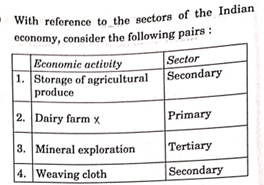
How many of the pairs given above are correctly matched? (a) Only one (b) Only two (c) Only three (d) All four Answer: B Economic activity can be classified into primary, secondary and tertiary. Primary activity: Primary activities are directly dependent on the environment as these refer to utilization of earth’s resources such as land, water, vegetation, building materials and minerals. It, thus, includes hunting and gathering, pastoral activities, fishing, forestry, agriculture, and mining and quarrying. Secondary activity: It adds value to natural resources by transforming raw materials into valuable products. For example, cotton in the boll has limited use but after it is transformed into yarn, becomes more valuable and can be used for making clothes. Tertiary activity: It is related to the service sector and acts as a link between primary and secondary activities. It involves activities like trade, storage, distribution, etc. Correct Pairs:
Source: NCERT-XII Fundamentals of Human Geography |
| Q.46 Consider the following materials:
1. Agricultural residues 2. Corn grain 3. Wastewater treatment sludge 4. Wood mill waste Which of the above can be used as feedstock for producing Sustainable Aviation Fuel? a) 1 and 2 only b) 3 and 4 only c) 1, 2, 3 and 4 d) 1, 3 and 4 only Answer. C Explanation: Sustainable aviation fuel (SAF) is a type of biofuel – meaning it is made from plant or animal materials rather than fossil fuels – and it has the potential to cut aviation’s greenhouse gas emissions by up to 80% compared with traditional jet fuels. Potential feedstocks for sustainable aviation fuel include:
· Agricultural residues (wheat straw, rice husk, corn stover, etc.) · Corn grain · Forestry waste including Wood mill waste · Wastewater treatment sludge Hydrothermal liquefaction technology uses heat and pressure to liquefy the organic matter in biomass/waste feedstocks to produce biocrude. When hydrotreated the biocrude is converted into transportation fuels including sustainable aviation fuel (SAF). Source- What is sustainable aviation fuel and how is it made? | World Economic Forum (weforum.org) ; India eyes to mandate use of 1% Sustainable Aviation Fuel by 2025: Oil Minister – The Hindu |
ED (THE COMPLEX PATH TO BIOFUEL SUSTAINABILITY)
Sustainable Aviation Biofuels as Future: Discussion taken in class and explained in text provided to students India plans to mandate the use of 1% of sustainable aviation fuel (SAF) for domestic airlines by 2025. Note: Unlike the United States and the European Union, India does not have policies governing sustainable aviation fuel yet. The European Commission’s SAF mandate is expected to start in 2025 with a minimum volume of SAF at 2%. PT- 3 TAKKAR ENVIRONMENT TEST Q. Consider the following: 1. Rotten potato 2. Maize 3. Broken rice 4. Used cooking oil How many of the above are permitted as feedstocks for the production of biofuels, according to the National Biofuel Policy 2018? a) Only one b) Only two c) Only three d) All four Ans. D Explanation: Salient Features of the National Policy on Biofuels 2018: ● The Policy categorises biofuels as “Basic Biofuels” viz. First Generation (1G) bioethanol & biodiesel and “Advanced Biofuels” – Second Generation (2G) ethanol, Municipal Solid Waste (MSW) to drop-in fuels, Third Generation (3G) biofuels, bio-CNG etc. to enable extension of appropriate financial and fiscal incentives under each category. ● The Policy expands the scope of raw material for ethanol production by allowing use of Sugarcane Juice, Sugar containing materials like Sugar Beet, Sweet Sorghum, Starch containing materials like Corn, Cassava, Damaged food grains like wheat, broken rice, Rotten Potatoes, unfit for human consumption for ethanol production. ● Farmers are at a risk of not getting appropriate price for their produce during the surplus production phase. Taking this into account, the Policy allows use of surplus food grains for production of ethanol for blending with petrol with the approval of National Biofuel Coordination Committee. ● With a thrust on Advanced Biofuels, the Policy indicates a viability gap funding scheme for 2G ethanol Bio refineries of Rs.5000 crore in 6 years in addition to additional tax incentives, higher purchase price as compared to 1G biofuels. ● The Policy encourages setting up of supply chain mechanisms for biodiesel production from non-edible oilseeds, Used Cooking Oil, short gestation crops. Source- Cabinet approves National Policy on Biofuels – 2018 (pib.gov.in) |
| Q.47 With reference to physical capital in Indian economy, consider the following pairs:
(a) Only one (b) Only two (c) Only three (d) All four Answer: B Fixed capital: Fixed capital refers to investment in long-term assets. Working capital: Short-term investment decisions, or day-to-day expenses including inventory, are called working capital. Correct Pairs
Source: NCERT-XII,Business Studies |
| Q.48 Which one of the following words/phrases is most appropriately used to denote “an interoperable network of 3D virtual worlds that can be accessed simultaneously by millions of users, who can exert property rights over virtual items”?
(a) Big data analytics (b) Cryptography (c) Metaverse (d) Virtual matrix Answer: C Explanation: The metaverse refers to the convergence of physical and virtual space accessed through computers and enabled by immersive technologies such as virtual reality, augmented reality and mixed reality. Described by proponents as the next iteration of the internet, this 3D virtual world is envisioned as a persistent, collective, shared space where digital facsimiles of ourselves, or avatars, move freely from one experience to another, taking our identities and monetary assets with us. Metaverse exerts intellectual property rights over virtual items.
|
Q. Consider the following statements:
Statement I: The metaverse is a collective virtual shared space that is created by the convergence of physical and virtual reality. Statement II: Blockchain technology plays a crucial role in ensuring security and transparency within the metaverse. Which one of the following is correct in respect of the above statements? a) Both Statement-I and Statement-II are correct and Statement-II is the correct explanation for Statement-I b) Both Statement-I and Statement-II are correct and Statement-II is not the correct explanation for Statement-I c) Statement-I is correct but Statement-II is incorrect d) Statement-I is incorrect but Statement-II is correct Answer: B Explanation Statement I is correct: The metaverse refers to a collective virtual shared space that is created by the convergence of physical and virtual reality. It is a digital space where users can interact with a computer-generated environment and other users. Virtual reality (VR) and augmented reality (AR) technologies are fundamental components contributing to the development of the metaverse. These technologies enhance the immersive and interactive experiences within the virtual shared space. Statement II is correct: Blockchain technology plays a crucial role in ensuring security and transparency within the metaverse. It can be used for secure transactions, ownership verification of virtual assets, and maintaining a decentralized and transparent system. These two statements are independently correct and there is no direct relationship between the two sentences. So, B is the correct answer. |
| Q.49 With reference to the rule/rules imposed by the Reserve Bank of India while treating foreign banks, consider the following statements:
1. There is no minimum capital requirement for wholly owned banking subsidiaries in India. 2. For wholly owned banking subsidiaries in India, at least 50% of the board members should be Indian nationals. Which of the statements given above is/are correct? (a) 1 only (b) 2 only (c) Both 1 and 2 (d) Neither 1 nor 2 Answer: B Statement 1 is incorrect: The minimum start-up capital requirement for a wholly owned subsidiary (WOS) of a foreign bank would be Rs. 3 billion and the WOS shall be required to maintain a capital adequacy ratio of 10 per cent or as may be prescribed from time to time on a continuous basis, from the commencement of its operations. Statement 2 is correct: Not less than 50 per cent of the directors should be Indian nationals resident in India. Other requirements: ● Not less than 50 per cent of the Directors should be non-executive directors ● A minimum of one-third of the directors should be totally independent of the management of the subsidiary in India, its parent or associates. ● The directors shall conform to the ‘Fit and Proper’ criteria as laid down in RBI’s extant guidelines dated June 25, 2004. ● RBI’s approval for the directors may be obtained as per the procedure adopted in the case of the erstwhile Local Advisory Boards of foreign bank branches. Sources: https://www.rbi.org.in/upload/content/images/Annexure.html#:~:text= The%20parent%20foreign%20bank%20will,minimum%20prescribed%20period% 20of%20operation.&text=6.,Indian%20nationals%20resident%20in%20India. |
| Q.50 With reference to Corporate Social Responsibility (CSR) rules in India, consider the following statements:
1. CSR rules specify that expenditures that benefit the company directly or its employees will not be considered as CSR activities. 2. CSR rules do not specify minimum spending on CSR activities. Which of the statements given above is/are correct? (a) 1 only (b) 2 only (c) Both 1 and 2 (d) Neither 1 nor 2 Answer: A On April 1, 2014, India became the first country to legally mandate corporate social responsibility. Statement 1 is correct: Any activity benefitting employees of the company shall not be considered as eligible CSR activity. As per the rule, any activity designed exclusively for the benefit of employees shall be considered as an “activity benefitting employees” and will not qualify as permissible CSR expenditure. Statement 2 is incorrect: Section 135(5) of the Act prescribes minimum spending obligation for the company. Under the Companies Act, 2013, certain classes of profitable companies are required to spend at least 2 per cent of their average net profit of the preceding three financial years on CSR activities in a particular financial year. Rule 2(1)(d) of the Companies (CSR Policy) Rules, 2014 defines CSR and the following activities are specifically excluded from being considered as eligible CSR activity: (i) Activities undertaken in pursuance of normal course of business of the company. However, exemption is provided for three financial years, till FY 2022-23, to companies engaged in R&D activities for new vaccines, drugs, and medical devices in their normal course of business, related to COVID19. This exclusion is allowed only in case the companies are engaged in R&D in collaboration with organisations as mentioned in item (ix) of Schedule VII and disclose the same in their Board reports. (ii) Activities undertaken outside India, except for training of Indian sports personnel representing any State or Union Territory at national level or India at international level; (iii) Contribution of any amount, directly or indirectly, to any political party under section 182 of the Act; (iv) Activities benefitting employees of the company as defined in section 2(k) of the Code on Wages, 2019; (v) Sponsorship activities for deriving marketing benefits for products/services; (vi) Activities for fulfilling statutory obligations under any law in force in India. |
DTRS-July 2023
Q. How many of the following become part of the contributions made by the companies in their Corporate Social Responsibilities policies under the Companies Act, 2013? 1. The Swachh Bharat Kosh 2. The Clean Ganga Fund 3. The Prime Minister’s National Relief Fund 4. The PM CARES Fund Select the correct answer using the options given below: a) Only one b) Only two c) Only three d) All four Answer: D Explanation: Under the Companies Act, 2013, Schedule VII specifies the activities that may be included in Corporate Social Responsibility (CSR) policies. It specifically mentions contributions to the Prime Minister’s National Relief Fund or any other fund set up by the central government for socio-economic development and relief. The Prime Minister’s National Relief Fund qualifies as an eligible contribution under CSR. The PM CARES Fund, established in 2020 for providing relief during emergencies such as pandemics, is also an acceptable CSR contribution. Contributions to the Swachh Bharat Kosh and the Clean Ganga Fund are explicitly mentioned as eligible CSR activities under activities promoting sanitation and conserving natural resources, respectively. Thus, all four funds listed qualify under the CSR policies as per the stipulations of the Companies Act, 2013. |
| Q.51 Consider the following statements:
Statement-I: If the United States of America (USA) were to default on its debt, holders of US Treasury Bonds will not be able to exercise their claims to receive payment. Statement-II: The USA Government debt is not backed by any hard assets, but only by the faith of the Government. Which one of the following is correct in respect of the above statements? (a) Both Statement-I and Statement-II are correct and Statement-I Statement-II explains (b) Both Statement-I and Statement-II are correct, but Statement-II does not explain Statement-I (c) Statement-I is correct, but Statement-II is incorrect (d) Statement-I is incorrect, but Statement-II is correct Answer: A Both Statement-I and Statement-II are correct and Statement-I explains Statement-I T-bills and U.S. bonds don’t come with complicated purchase agreements. U.S. debt is sold under the full faith and credit of the government as a simple obligation to pay. The instruments don’t even contemplate the possibility of default. If the U.S. government misses a payment, American debt holders who wanted to litigate would presumably sue in either U.S. district court or the U.S. Court of Federal Claims, which oversees (among other things) disputes between the federal government and U.S. contractors. Once that was decided, the United States would argue that it’s immune, as a sovereign, from bondholder claims. U.S. debt instruments do not waive sovereign immunity. Source: https://www.reuters.com/article/idUS1727210731/#:~:text=If%20the% 20U.S.%20government%20misses,federal%20government%20and%20U.S.%20contractors |
| Q.52 Consider the following statements:
Statement-I: Syndicated lending spreads the risk of borrower default across multiple lenders. Statement-II: The syndicated loan can be a fixed amount/lump sum of funds, but cannot be a credit line. Which one of the following is correct in respect of the above statements? (a) Both Statement-I. and Statement-II are correct and Statement-II explains Statement-I (b) Both Statement-I and Statement-II are correct, but Statement-II does not explain Statement-I (c) Statement-I is correct, but Statement-II is incorrect (d) Statement-I is incorrect, but Statement-II is correct Answer: C Statement 1 is correct: Syndicated loans allow multiple lenders to form a group and contribute a certain portion of a full loan. These types of loans allow lenders to spread the risk among others so they aren’t liable for the full amount in the event of a default. The borrower can be a corporation, a large project, or a sovereign government. They are also used in the leveraged buyout community to fund large corporate takeovers with primarily debt funding. Statement 2 is incorrect: The syndicated loan can be in fixed or lump sum quantity. These loans can also be split into dual tranches for banks that fund standard revolving credit lines and institutional investors that fund fixed-rate term loans. Source: Investopedia |
| Q.53 Consider the following statements in respect of the digital rupee:
1. It is a sovereign currency issued by the Reserve Bank of India (RBI) in alignment with its monetary policy. 2. It appears as a liability on the RBI’s balance sheet. 3. It is insured against inflation by its very design. 4. It is freely convertible against commercial bank money and cash. Which of the statements given above are correct? (a) 1 and 2 only (b) 1 and 3 only (c) 2 and 4 only (d) 1, 2 and 4 Answer: D Features of Digital Rupee 1) CBDC is a sovereign currency issued by central banks in alignment with their monetary policy. 2) It appears as a liability on the central bank’s balance sheet. 3) It must be accepted as a medium of payment, legal tender, and a safe store of value by all citizens, enterprises, and government agencies. 4) CBDC is freely convertible against commercial bank money and cash. 5) CBDC is a fungible legal tender for which holders need not have a bank account. Also, eRupee will always have the same value as physical bank currency notes which is a legal tender issued by the central bank unlike crypto assets such as bitcoin. Hence, only statement 3 is incorrect.
|
DTRS-December 2022
Q. Consider the following: 1. Solana 2. Ethereum 3. Tether 4. e-Rupee Which of the currencies mentioned above is/are crypto currencies or are backed by block chain technology? (a) 1 and 2 only (b) 1, 2 and 3 only (c) 2, 3 and 4 only (d) 1, 2, 3 and 4 only Answer: b Explanation: At its core, cryptocurrency is typically decentralized digital money designed to be used over the internet. Bitcoin, which launched in 2008, was the first cryptocurrency, and it remains by far the biggest, most influential, and best-known. In the decade since, Bitcoin and other cryptocurrencies like Ethereum have grown as digital alternatives to money issued by governments. Like Bitcoin, Ethereum is a blockchain network. But Ethereum was designed as a programmable blockchain meaning it wasn’t created to support a currency, but rather to enable the network’s users to create, publish, monetize, and deploy decentralized applications (dApps). Tether was the first cryptocurrency marketed as a stable coin — a breed of crypto known as fiat-collateralized stable coins. Solana is a blockchain platform that generates the cryptocurrency, Sol. Solana has made strides in decentralized finance (DeFi) and specifically with its smart contract technology — programs that run on the platform according to preset conditions. The Reserve Bank of India (RBI) recently launched the Central Bank Digital Currency (CBDC), digital rupee or e-rupee (e₹) — for the common man. CBDC is a legal tender issued by the RBI in digital form. It is the same as the fiat currency, and is exchangeable one-to-one with the fiat currency. Only its form is different, it is not paper (or polymer) like physical cash. It is a fungible legal tender, for which holders need not have a bank account. CBDC will appear as ‘liability’ (currency in circulation) on the RBI’s balance sheet. The e-rupee will be in the form of a digital token representing a claim on the central bank, and will effectively function as the digital equivalent of a banknote that can be transferred electronically from one holder to another. Digital Rupee or e-Rupee isn’t linked to cryptocurrency by any means and isn’t based on Blockchain technology. It is just a digital form of cash/paper money. |
| Q.54 With reference to ancient India, Gautama Buddha was generally known by which of the following epithets?
1. Nayaputta 2. Shakyamuni 3. Tathagata Select the correct answer using the code given below: (a) 1 only (b) 2 and 3 only (c) 1, 2 and 3 (d) None of the above are epithets of Gautama Buddha Answer: B Explanation: Many epithets have been used for Gautam Buddha in the Buddhist tradition. Shakyamuni means the saint who belonged to the Shakya clan, and Tathagata means the one who has attained the highest spiritual goal. Nayaputta was an epithet used for the last Jain Tirthankara Mahavira as he renounced the royal life at a very young age. It also indicates his affiliation to the Jnatrika clan. Source: A history of ancient and Early medieval India, Upinder singh |
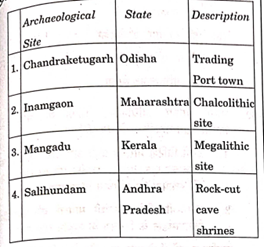
In which of the above rows is the given information correctly matched? (a) 1 and 2 (b) 2 and 3 (c) 3 and 4 (d) 1 and 4 Answer: B Explanation: Chandraketugarh is an urban site located in 24 Paraganas district, West Bengal. Salihundam located in Srikakulam district of Andhra Pradesh is known for Buddhist stupas, monasteries, and chaityas having no evidence of rock-cut cave shrines. Source: A history of ancient and Early medieval India, Upinder singh |
PANCHSUTRA TEST 3
Q. With reference to the Megalithic Period, consider the following statements: 1) The Megalithic culture is characterised either as burial sites or commemorative memorials. 2) ‘Black and red ware’ pottery was one of characteristics of the megalithic period. 3) Megalithic period is characterised by the nomadic pastoralists with bone and iron tools. How many of the statements given above are correct? a) Only one b) Only two c) All three d) None Answer: B Other Sites of megalithic sites Seraikala in Jharkhand Deodhoora in Almora district of Uttarakhand Koldihwa (Belan valley), Banda, Mirzapur, Prayagraj, and Varanasi districts of Uttar Pradesh Thrissur and Kunnattur in Kerala Waztal, Burzahom and Brah in Kashmir Maski, Hallur, Chandravalli, Hire Benkal, Coorg, Heggadehalli and Brahmagiri in Karnataka Nagarjunakonda in Andhra Pradesh Junapani, Khapa, Mahurjhari, and Naikund are near Nagpur and a few sites in the Pune district in Maharashtra. Adichanallue, Sanur, Kodumanal and Perumbair in Tamil Nadu Source: Old NCERT, R.S. Sharma |
| Q.56 Who of the following rulers of medieval India gave permission to the Portuguese to build a fort at Bhatkal?
(a) Krishnadevaraya (b) Narasimha Saluva (c) Muhammad Shah III (d) Yusuf Adil Shah Answer: A Explanation: Bhatkal is a coastal town in Uttara Kannada district of Karnataka. It is named after the Jaina Grammarian Bhattakalanka. The most prominent ruler of Vijayanagara empire Krishnadevaraya (1509-29) maintained friendly relations with the Portuguese. He also helped them in capturing Goa from the Sultanate of Bijapur in 1510 CE. In the same year, he signed a treaty with the Alphonso de Albuquerque allowing the Portuguese to construct forts in Bhatkal. Source: History of Medieval India, Satish Chandra |
|
| Q.57 With reference to revenue collection by Cornwallis, consider the following statements:
1. Under the Ryotwari Settlement of revenue collection, the peasants were exempted from revenue payment in case of bad harvests or natural calamities. 2. Under the Permanent Settlement in Bengal, if the Zamindar failed to pay his revenues to the state, on or before the fixed date, he would be removed from his Zamindari. Which of the statements given above is/are correct? (a) 1 only (b) 2 only (c) Both 1 and 2 (d) Neither 1 nor 2 Answer: B Explanation: Lord Cornwallis (1786-93) implemented the Permanent Settlement or the Zamindari system for the collection of land revenue in the Bengal province and other areas. Under this system, the Zamindar or the landlord enjoyed the ownership rights over the land only if he paid revenue to the Company on or before the fixed date. if he failed to do so by the sunset of the last day, he would lose his Zamindari. His rights would be auctioned to the highest bidder. The Ryotwari system was introduced much later, in 1820, by Thomas Munro in the Madras Presidency. Source: India’s Struggle for Independence, Bipan Chandra |
Q. Consider the following pairs:
Land revenue system –Implemented in the region 1. Permanent settlement- Central Province, Gangetic Valley 2. Ryotwari settlement – Bengal, Bihar, Orissa 3. Mahalwari system – Madras, Bombay, parts of Assam and Coorgh How many of the pairs given above are correctly matched? a) Only one b) Only two c) All three d) None Answer: D Land revenue system-Implemented in the region 1) Permanent settlement – Bengal, Bihar, Orissa 2) Ryotwari settlement – Madras, Bombay, parts of Assam and Coorgh 3) Mahalwari system – North-West Frontier, Central Province, Gangetic Valley Additional information: Ryotwari system ● This system of land revenue was instituted in the late 18th century by Sir Thomas Munro, Governor of Madras in 1820. ● This was practiced in the Madras and Bombay areas, as well as Assam and Coorg provinces. ● In this system, the peasants or cultivators were regarded as the owners of the land. They had ownership rights, could sell, mortgage or gift the land. ● The taxes were directly collected by the government from the peasants. ● The rates were 50% in dryland and 60% in the wetland. ● The rates were high and unlike the Permanent System, they were open to being increased. ● If they failed to pay the taxes, they were evicted by the government. ● Ryot means peasant cultivators. ● Here there were no middlemen as in the Zamindari system. But, since high taxes had to be paid only in cash (no option of paying in kind as before the British) the problem of moneylenders came into the show. They further burdened the peasants with heavy interests. Source: History of Modern India, Bipan Chandra. |
| Q.58 Consider the following statements:
1. There are no parables in Upanishads. 2. Upanishads were composed earlier than the Puranas. Which of the statements given above is/are correct? (a) 1 only (b) 2 only (c) Both 1 and 2 (d) Neither 1 nor 2 Answer: B Explanation: A parable is a story or play in which each character or event is a symbol representing an idea or a quality, such as truth, evil, and death. In upanishads parables have been used to explain spiritual and philosophical aspects of life. For example, in Katha Upanishad, the human body is equated to a chariot where the horses are the senses, the mind is the reins, and the driver/charioteer is the intellect. The passenger of the chariot is the Self (Atman). The Upanishads were composed between 800 BCE to 500 BCE, while the Puranas were written much later between 350 CE to 750 CE. Source: A history of ancient and Early medieval India, Upinder singh |
| Q.59 Consider the following statements:
1. India is a member of the International Grains Council. 2. A country needs to be a member of the International Grains Council for exporting or importing rice and wheat. Which of the statements given above is/are correct? (a) 1 only (b) 2 only (c) Both 1 and 2 (d) Neither 1 nor 2 Answer: A Statement 1 is correct: India is a member of the International Grains Council. There are currently 30 members to the the council. Statement 2 is not correct: A country needs not be a member of the International Grains Council for exporting or importing rice and wheat. Each member is designated as an importer or exporter on the basis of its average trade in grains, rice and oilseeds. The operations of the Council are financed by annual contributions from its members, which are proportionate to their share of world trade in grains, rice and oilseeds. |
| Q.60 Which one of the following was the latest inclusion in the Intangible Cultural Heritage List of UNESCO?
(a) Chhau dance (b) Durga puja (c) Garba dance (d) Kumbh mela Answer: C Explanation: UNESCO has inscribed the popular Gujarati folk dance Garba on its Representative List of the Intangible Cultural Heritage of Humanity in December under the provisions of the 2003 Convention for the Safeguarding of Intangible Cultural Heritage (ICH) during the 18th meeting of the Intergovernmental Committee for the Safeguarding of the Intangible Cultural Heritage from 5th – 9th December, 2023 in Kasane, Botswana. Garba is the 15th ICH element from India to join this list. Source: https://india.un.org/en/255203-garba-joins-unesco-list-intangible-cultural-heritage |
DTRS MAGAZINE
Q. With reference to Indian dance forms, consider the following pairs: Dance forms – States 1) Garba – Gujarat 2) Lavini – Manipur 3) Sankirtana – Assam 4) Nati – Himachal Pradesh How many of the above pairs are correctly matched? a) Only one b) Only two c) Only three d) All four Answer: B Context: Prime Minister announced that Garba dance has been added to the UNESCO List of the Intangible Cultural Heritage of Humanity during its 18th session, taking place in Kasane, Botswana from 5 to 9 December 2023. The inclusion of Garba now makes it India’s 15th inscription on the List. Explanation: Pair 1 is correctly matched: Garba is a dance form of Gujarat. It is a ritualistic and devotional dance performed throughout the State of Gujarat, and across India, Garba is celebrated for nine days during the festival of Navratri. The festival is dedicated to the worship of the feminine energy or Shakti. The cultural, performative, and visual expressions of this feminine energy are expressed through the Garba dance. Pair 2 is incorrectly matched: Lavini is a popular dance form of Maharashtra. Lavani was traditionally performed by women in baithaks for a patron. It came to be associated with lasciviousness around the late 19th century, when Marathi theater, written and enacted by upper-caste men, began to grow in popularity. Eventually, Lavani was integrated into folk tamashas instead. These were typically overnight performances that included among other things folk dances, a play, and comedy acts. Pair 3 is incorrectly matched: Sankirtana is a dance form of Assam. It is also a part of UNESCO List of the Intangible Cultural Heritage of Humanity. It encompasses an array of arts performed to mark religious occasions and various stages in the life of the Vaishnava people of the Manipur plains. Sankirtana practices centre on the temple, where performers narrate the lives and deeds of Krishna through song and dance. In a typical performance, two drummers and about ten singer-dancers perform in a hall or domestic courtyard encircled by seated devotees. Pair 4 is correctly matched: Nati dance form belongs to Himachal Pradesh. It is performed in the districts of Kullu, Sirmaur, Shimla, etc. of Himachal Pradesh. It is started at a slow speed, while doing this it is called loose pulse and later it increases at a rapid pace. Dholak, Karnal, Ranasingha, Flute, Shehnai, and Nagade are used in this dance. In this dance, women express their happiness by dancing in the courtyard of the house. During a Dussehra festival in 2016, over 9000 artists performed a folk dance in the state of Himachal Pradesh to highlight the ‘Save the Girl Child’ message. This grand event created a world record of largest participation at one point in time and entered the Guinness Book of World Records. https://indianexpress.com/article/cities/ahmedabad/gujarats-garba-dance-enters-unescos-list-of-intangible-cultural-heritage-9057234/ |
| Q.61 Who was the Provisional President of the Constituent Assembly before Dr. Rajendra Prasad took over?
(a) C. Rajagopalachari (b) Dr. B.R. Ambedkar (c) T.T. Krishnamachari (d) Dr. Sachchidananda Sinha Answer: D Explanation: The constituent assembly was elected indirectly by the members of the Provincial legislative assembly, which existed under the British Raj. It first met on December 9, 1946, in Delhi. On August 15, 1947, India became an independent nation, and the Constituent Assembly started functioning as India’s Parliament. Dr. Sachchidananda Sinha was the first provisional president of the Constituent Assembly. On 11th December, 1946, Dr. Rajendra Prasad was elected as the permanent chairman of the country’s Constituent Assembly, with Harendra Coomar Mookerjee as the assistant chairman. Source: India’s Struggle for Independence, Bipan Chandra |
TAKKAR PHASE 1 – POLITY TEST 1
Q. With reference to working of the Constituent Assembly, which of the following functions was/were performed by Constituent Assembly? 1. It elected Dr. Rajendra Prasad as the first President of India. 2. It ratified India’s membership to the United Nations. 3. It adopted the National Song and National Anthem of India. Select the correct answer using the code given below: a) 1 only b) 1 and 3 only c) 2 and 3 only d) 1, 2 and 3 Answer: B Explanation: The Constituent Assembly elected Dr. Rajendra Prasad as the first President of India on January 24, 1950. Hence, statement 1 is correct. The Constituent Assembly ratified India’s membership of the Commonwealth in May 1949 and not the United Nations (UN). India has been a member of the UN since 1945 itself and India continued to be a member of the UN after independence. Hence, statement 2 is incorrect. The Constituent Assembly adopted both the National Anthem and National Song on January 24, 1950. Hence, statement 3 is correct. |
| Q.62 With reference to the Government of India Act, 1935, consider the following statements:
1. It provided for the establishment of an All India Federation based on the union of the British Indian Provinces and Princely States. 2. Defence and Foreign Affairs were kept under the control of the federal legislature. Which of the statements given above is/are correct? (a) 1 only (b) 2 only (c) Both 1 and 2 (d) Neither 1 nor 2 Answer: C Explanation: ● Statement 1 is correct: The act provided for the establishment of an All-India Federation consisting of British Indian provinces and Princely States as units. However, the federation never came into being as the princely states refused to join it. ● The Act divided the powers between the Centre and units in terms of three lists—Federal List (for Centre, with 59 items), Provincial List (for provinces, with 54 items) and the Concurrent List (for both, with 36 items). Residuary powers were given to the Viceroy. ● Statement 2 is correct: Subjects like Defence and Foreign Affairs were kept under the control of the federal legislature. Source: India’s Struggle for Independence, Bipan Chandra; D. D. Basu |
Takkar question phase 1
Q. Consider the following statements regarding provisions of Government of India 1935 Act: 1. It led to creation of an All India Federation. 2. Diarchy was abolished at both centre and at provincial levels. 3. Viceroy was vested with residual powers. How many of the statements given above are correct? a) Only one b) Only two c) All three d) None Answer: A Explanation: · Statement 1 is incorrect: It contains provision for creation of an All India Federation consisting of British India and the princely states. The provinces in British India would have to join the federation but this was not compulsory for the princely states. This federation never materialized because of the lack of support from the required number of princely states. · Statement 2 is incorrect: Diarchy was abolished only at provincial levels. Diarchy at the centre had the subjects under the Federal List were divided into two: Reserved and Transferred. · Statement 3 is correct: Viceroy was vested with residual powers. Additional information: · The Government of India Act was passed by the British parliament in 1935 and came into effect in 1937. · It was based on a report by a Joint Select Committee, led by Lord Linlithgow, set up the two houses of the British parliament. · The report, in turn, was the result of the Joint Committee’s scrutiny of the ‘White Paper’ – a scheme of constitutional proposals – prepared by the British government close on the heels of the Round Table conferences. · The Act was written in a legal style, organized around 11 ‘Parts’ and 10 ‘Schedules’. Each part was further divided into chapters. It is considered to be one of the longest pieces of legislation passed by the British parliament – parliamentary debates around the Act involved 2000 speeches. · Some of the key features of the Act were: 1. The creation of a ‘Federation of India’ that consisted of two levels: a central executive and parliament, and below it, provinces and princely states. 2. It discarded the ‘dyarchy’ system at the provincial level and allowed for the emergence of popularly elected provincial legislatures. Dyarchy was introduced at the central level, key subjects like defence and foreign affairs were under the direct control of the Governor General. 3. A federal court was established. 4. The franchise was expanded to 14% of the population from 3%. 5. Separate electorates were provided for Muslims, Sikhs and others, but not to Depressed Classes. Source: Themes in Indian History – Part III, Class XII NCERT |
| Q.63 Which one of the following is attributed to playwright Bhasa?
(a) Kavyalankara (b) Natyashastra (c) Madhyama-vyayoga (d) Mahabhashya Answer: C Explanation: The exact number of works attributed to Bhasa is uncertain and debated among scholars. Traditionally, Bhasa is said to have authored around thirteen plays, but only a small number of these have survived in complete form. His plays are revered for their rich language, deep characters, and exploration of timeless human dilemmas, making him a foundational figure in the history of Indian theatre. Bhasa is celebrated as one of the most revered playwrights in classical Sanskrit literature. Some of his notable plays are: 1. Swapnavasavadatta: A romantic play revolving around the love story of King Udayana and Princess Vasavadatta, notable for its lyrical dialogue and complex plot. 2. Pratijna Yaugandharayana: A play known for its humor and political intrigue, focusing on the story of King Yaugandharayana and his advisor, minister Kautalya. 3. Madhyama Vyayoga: A poignant drama depicting the meeting of King Dushyanta and Shakuntala, exploring themes of love, separation, and reconciliation. 4. Uru-Bhangam: A tragic play that narrates the story of the warrior Karna from the Mahabharata, highlighting themes of loyalty, sacrifice, and fate. Kavyalankara is a term from Sanskrit literary theory that translates to “ornaments of poetry” or “embellishments of poetry.” It refers to the principles and techniques used in creating and appreciating poetic beauty and aesthetic excellence in literature. Key treatises on Kavyalankara are written by Bhamaha, Rudrata, and Anandavardhana. The Natyashastra is an ancient Indian treatise on performing arts attributed to the sage Bharata Muni. It is one of the most important texts in classical Indian literature, particularly known for its comprehensive exploration of various aspects of dramatic theory, aesthetics, and performing arts. The Mahabhasya is a monumental Sanskrit text composed by Patanjali. It is primarily a commentary on Panini’s Ashtadhyayi. It explains the rules of grammar laid down by Panini, addressing various linguistic phenomena, rules of word formation, syntax, and semantics. Source: History of Early India : From the Origins to AD 1300. by Romila Thapar |
| Q.64 Sanghabhuti, an Indian Buddhist monk, who travelled to China at the end of the fourth century AD, was the author of a commentary on:
(a) Prajnaparamita Sutra (b) Visuddhimagga (c) Sarvastivada Vinaya (d) Lalitavistara Answer: C Explanation: The Sarvāstivāda Vinaya is a significant text in the Buddhist tradition. Like many early Buddhist texts, it does not have a single identifiable author. It evolved over time within the Sarvāstivāda tradition through the collective efforts of the monastic community to codify and preserve the rules and regulations governing monastic life. It also includes explanations and justifications for these rules based on the teachings of the Buddha. Many Buddhist scholars wrote commentaries on the Sarvāstivāda Vinaya over the centuries. Some of the well-known commentators are Sanghabhuti, Dharmagupta, Manoratha, Dharmottara, and Yasomitra. Sanghabhūti wrote a comprehensive commentary providing detailed explanations and interpretations of the rules and principles found within the Vinaya. The Sarvāstivāda school was one of the early Buddhist schools that developed during the time of the Second Buddhist Council (2nd century BCE). It was known for its comprehensive approach to Buddhist doctrine and its emphasis on the theory of momentariness (sarvāstivāda), which posited that all phenomena exist in the past, present, and future. The Prajñāpāramitā Sutras are a collection of Mahayana Buddhist scriptures that focus on the perfection of wisdom (prajñā) and the ultimate nature of reality (paramita). The Prajñāpāramitā Sutras expound on the concept of emptiness (shunyata) and the illusory nature of phenomena. They teach that all phenomena lack inherent existence or self-nature and are interdependent and impermanent. The sutras use paradoxical language and profound symbolism to convey these teachings. Nagarjuna, a pivotal figure in Mahayana Buddhism, is intricately linked to the Prajñāpāramitā Sutras due to his profound philosophical contributions and interpretations of their teachings. He developed the Madhyamika school of philosophy centered around the concept of śūnyatā (emptiness). The Visuddhimagga, also known as the Path of Purification, is a seminal Theravada Buddhist text composed by the Indian scholar-monk Buddhaghosa in the 5th century CE. The text is divided into ten chapters (paṭṭhāna), each focusing on different stages and aspects of the spiritual path. These include detailed instructions on morality (sila), concentration (samadhi), wisdom (pañña), and various meditation practices. The Lalitavistara is an important Mahayana Buddhist scripture that narrates the life of Siddhartha Gautama, the historical Buddha, and his path to enlightenment. It is not attributed to a single author but is rather a compilation of stories and teachings passed down through oral tradition in Buddhist communities. Source: IGNOU ancient history material, chapter 7: EMERGENCE OF BUDDHIST CENTRAL AND PENINSULAR INDIA |
| Q.65 Consider the following properties included in the World Heritage List released by UNESCO:
1. Shantiniketan 2. Rani-ki-Vav 3. Sacred Ensembles of the Hoysalas 4. Mahabodhi Temple Complex at Bodhgaya How many of the above properties were included in 2023? (a) Only one (b) Only two (c) Only three (d) All four Answer: B Explanation:In September 2023, 12th century Hoysala Temples of Karnataka along with Santiniketan, West Bengal, were declared world heritage sites by UNESCO. |
1. Consider the following ;
Archeological sites – Situated in: 1. Historical Group of Dhamnar – Madhya Pradesh 2. Bhojeshwar Mahadev Temple – Odisha 3. Khooni Bhandara – Uttar Pradesh 4. Gond monuments of Ramnagar – Rajasthan How many of the pairs given above are correctly matched? a) Only one b) Only two c) Only three d) All four Answer: A Explanation: Given below is correctly matched pairs Archeological sites – Situated in 1) Historical Group of Dhamnar – Madhya Pradesh 2) Bhojeshwar Mahadev Temple – Madhya Pradesh 3) Khooni Bhandara – Madhya Pradesh 4) Gond monuments of Ramnagar – Madhya Pradesh |
| Q.66 As per Article 368 of the Constitution of India, the Parliament may amend any provision of the Constitution by way of:
1. Addition 2. Variation 3. Repeal Select the correct answer using the code given below: (a) 1 and 2 only (b) 2 and 3 only (c) 1 and 3 only (d) 1, 2 and 3 Answer: D Explanation: Article 368 – Parliament may in exercise of its constituent power amend by way of addition, variation or repeal any provision of this Constitution in accordance with the procedure laid down in this article. |
| Q.67 Consider the following countries:
1. Italy 2. Japan 3. Nigeria 4. South Korea 5. South Africa Which of the above countries are frequently mentioned in the media for their low birth rates, or ageing population or declining population? (a) 1, 2 and 4 (b) 1, 3 and 5 (c) 2 and 4 only (d) 3 and 5 only Answer: A Explanation: Italy, Japan and South Korea are facing very low fertility rates. Italy: · Italy has long had one of the lowest birth rates in the EU, and the country is ageing at a much faster rate than other member states, and it appears to be getting worse. · According to government statistics, the average number of children per Italian woman has dropped from 1.24 in 2022 to 1.2 in 2023. · Experts say that if the country’s population crisis continues, Italy’s population of 59 million could fall by almost 1 million by 2030. Japan: · Japan grapples with a profound demographic challenge as the country’s birth rate hits an unprecedented low for the eighth consecutive year. · The latest data from the Health and Welfare Ministry unveils a concerning decline, with 2023 witnessing the birth of only 758,631 babies, marking a 5.1 percent decrease from the previous year and reaching the lowest point since statistical records commenced in 1899. South Korea: · South Korea has the world’s lowest fertility rate, which indicates the average number of children a woman will have in her lifetime. · It recorded a rate of just 0.72 in 2023 – down from 0.78 the previous year, the latest drop in a long string of yearly declines. Source: Italy: https://www.euronews.com/my-europe/2024/05/10/italys-falling-birth-rate-is-a-crisis-thats-only-getting-worse#:~:text=Italy%20has%20long%20had%20one,2022%20to%201.2%20in%202023. S. Korea: https://edition.cnn.com/2024/05/09/asia/south-korea-government-population-birth-rate-intl-hnk/index.html#:~:text=South%20Korea%20has%20the |
| Q.68 Which of the following statements are correct in respect of a Money Bill in the Parliament?
1. Article 109 mentions special procedure in respect of Money Bills. 2. A Money Bill shall not be introduced in the Council of States. 3. The Rajya Sabha can either approve the Bill or suggest changes but cannot reject it. 4. Amendments to a Money Bill suggested by the Rajya Sabha have to be accepted by the Lok Sabha. Select the answer using the code given below: (a) 1 and 2 only (b) 2 and 3 only (c) 1, 2 and 3 (d) 1, 3 and 4 Answer: C Explanation: Statement 1 is correct: Article 109 mentions the special procedure in respect of Money Bills. Statement 2 is correct: A Money Bill shall not be introduced in the Council of States. Statement 3 is correct: After a Money Bill has been passed by the House of the People it shall be transmitted to the Council of States for its recommendations and the Council of States shall within a period of fourteen days from the date of its receipt of the Bill return the Bill to the House of the People with its recommendations. Statement 4 is incorrect: The House of the People may thereupon either accept or reject all or any of the recommendations of the Council of States. If a Money Bill passed by the House of the People and transmitted to the Council of States for its recommendations is not returned to the House of the People within the said period of fourteen days, it shall be deemed to have been passed by both Houses at the expiration of the said period in the form in which it was passed by the House of the People. |
Q. Consider the following:
1. A private member cannot introduce a Money Bill in the Lok Sabha. 2. The Rajya Sabha cannot propose amendments to a Money Bill. 3. The Annual Financial Statement is deemed to be a Money Bill. Which of the above given statements are incorrect? a) 1 and 2 only b) 2 and 3 only c) 1 and 3 only d) 1, 2 and 3 Answer: D Explanation: Statement 1 is incorrect: A private member can introduce a Money Bill in the Lok Sabha. Statement 2 is incorrect: The Rajya Sabha can discuss as well as suggest amendments to a Money Bill Statement 3 is incorrect: The Annual Financial Statement is not deemed to be a Money Bill. It is the Finance Bill and Appropriation Bill that are considered as Money Bills.
|
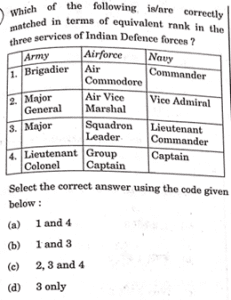
Answer: D Explanation:
Source: |
| Q.70 The North Eastern Council (NEC) was established by the North Eastern Council Act, 1971. Subsequent to the amendment of NEC Act in 2002, the Council comprises which of the following members?
1. Governor of the Constituent State 2. Chief Minister of the Constituent State 3. Three Members to be nominated by the President of India 4. The Home Minister of India Select the correct answer using the code given below: (a) 1, 2 and 3 only (b) 1, 3 and 4 only (c) 2 and 4 only (d) 1, 2, 3 and 4 Answer: A Explanation: Northeastern Council (NEC) · It is the nodal agency for the economic and social development of the North Eastern Region which consists of the eight States of Arunachal Pradesh, Assam, Manipur, Meghalaya, Mizoram, Nagaland, Sikkim and Tripura. · It was constituted in 1971 by an Act of Parliament. · Members: The Council comprises of Governors and Chief Ministers of constituent States and three members to be nominated by the President. |
| Q.71 How many Delimitation Commissions have been constituted by the Government of India till December 2023?
(a) One (b) Two (c) Three (d) Four Answer: D Explanation: Delimitation literally means the act or process of fixing limits or boundaries of territorial constituencies in a country or a province having a legislative body. The job of delimitation is assigned to a high-power body. Such a body is known as Delimitation Commission or a Boundary Commission. In India, such Delimitation Commissions have been constituted 4 times – in 1952 under the Delimitation Commission Act, 1952, in 1963 under Delimitation Commission Act, 1962, in 1973 under Delimitation Act, 1972 and in 2002 under Delimitation Act, 2002. |
|
| Q.72 The Constitution (71st Amendment) Act, 1992 amends the Eighth Schedule to the Constitution to include which of the following languages?
1. Konkani 2. Manipuri 3. Nepali 4. Maithili Select the correct answer using the code given below: (a) 1, 2 and 3 (b) 1, 2 and 4 (c) 1, 3 and 4 (d) 2, 3 and 4 Answer: A Explanation: The Constitution (Seventy-first Amendment) Act, 1992: It added three new languages in the 8th schedule of the constitution – Konkani, Manipuri and Nepali. Whereas Maithili was added by 92nd amendment of the constitution, along with 3 others including Bodo, Dogri, and Santhali. |
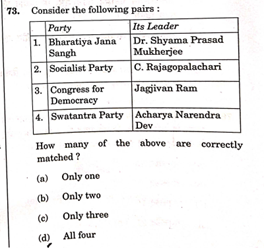
Answer: B Explanation: The Akhil Bharatiya Jana Sangh was an Indian nationalist political party. This party was established on 21 October 1951 in Delhi that existed from 1951 to 1977. Its three founding members were Shyama Prasad Mukherjee, Balraj Madhok and Deendayal Upadhyaya. The Swatantra Party was an Indian classical liberal political party that existed from 1959 to 1974. It was founded by C. Rajagopalachari in reaction to what he felt was the Jawaharlal Nehru-dominated Indian National Congress’s increasingly socialist and statist outlook. The Congress Socialist Party was founded in 1934 by Jayaprakash Narayan, Ram Manohar Lohia, Acharya Narendra Dev, and Achyut Patwardhan. It was a socialist caucus within the Indian National Congress. It was founded by Congress members who rejected what they saw as the anti-rational mysticism of Gandhi as well as the sectarian attitude of the Communist Party of India towards the Congress. The CSP advocated decentralized socialism in which co-operatives, trade unions, independent farmers, and local authorities would hold a substantial share of the economic power. The Congress for Democracy (CFD) was an Indian political party founded in 1977 by Jagjivan Ram. It was formed after Jagjivan Ram, Hemavati Nandan Bahuguna, and Nandini Satapathy left the Indian National Congress of Indira Gandhi and denounced her rule during the Indian Emergency. Source: India’s Struggle for Independence, Bipan Chandra |
Q. Consider the following statements regarding rise of left wing in India:
1. The Russian revolution of 1917 inspired Indian revolutionary nationalists and moved them towards socialism. 2. Suspension of Civil Disobedience Movement led to the formation of Socialist party within the Indian National Congress(INC). Which of the statements given above is/are correct? a) 1 only b) 2 only c) Both 1 and 2 d) Neither 1 nor 2 Answer: C Source: India’s Struggle for Independence, Bipan Chandra
|
| Q.74 Which of the following statements are correct about the Constitution of India?
1. Powers of the Municipalities are given in Part IX A of the Constitution. 2. Emergency provisions are given in Part XVIII of the Constitution. 3. Provisions related to the amendment of the Constitution are given in Part XX of the Constitution. Select the answer using the code given below: (a) 1 and 2 only (b) 2 and 3 only (c) 1 and 3 only (d) 1, 2 and 3 Answer: D Explanation: All the statements are correct. Parts of the constitution Part IX A – Powers of municipalities Part XVIII – Emergency provisions Part XX – Amendment to the Constitution |
|
| Q.75 Which one of the following statements is correct as per the Constitution of India?
(a) Inter-State trade and commerce is a State subject under the State List. (b) Inter-State migration is a State subject under the State List. (c) Inter-State quarantine is a Union subject under the Union list. (d) Corporation tax is a State subject under the State List. Answer: C Explanation: The Seventh Schedule to the Constitution of India specifies the allocation of powers and functions between the Union and the State legislatures. It embodies three lists namely, the Union List, the State List, and the Concurrent List. Some subjects under union list: · Inter-state trade and commerce · Inter-state migration · Inter-state quarantine · Corporation tax Since all the above-mentioned subjects are included in union list. Thus, Statement a, b and d are incorrect. |
|
| Q.76 Under which of the following Articles of the Constitution of India, has the Supreme Court of India placed the Right to Privacy?
(a) Article 15 (b) Article 16 (c) Article 19 (d) Article 21 Answer: D Explanation: In India, the right to privacy is a fundamental right protected under Article 21 of the Indian Constitution. The most recent affirmation of this right came in a historic 2017 decision of Justice K.S. Puttaswamy (Retd) vs. Union of India. |
|
| Q.77 What are the duties of the Chief of Defence Staff (CDS) as Head of the Department of Military Affairs?
1. Permanent Chairman of Chiefs of Staff Committee 2. Exercise military command over the three Service Chiefs 3. Principal Military Advisor to Defence Minister on all tri-service matters Select the correct answer using the code given below: (a) 1, 2 and 3 (b) 1 and 2 only (c) 2 and 3 only (d) 1 and 3 only Answer: D Explanation: Statement 1 and 3 are correct. Statement 2 is incorrect. Duties of Chief of Defence Staff (CDS) · Statement 1 is correct: To function as the Permanent Chairman of the Chiefs of Staff Committee. · To head the Department of Military Affairs in the Ministry of Defence and function as its secretary. · Statement 2 is incorrect: It does not exercise military command. · Statement 3 is correct: To act as the Principal Military Advisor to Hon’ble Raksha Mantri on all Tri-Service matters. |
| Q.78 Operations undertaken by the Army towards upliftment of the local population in remote areas to include addressing of their basic needs is called:
(a) Operation Sankalp (b) Operation Maitri (c) Operation Sadbhavana (d) Operation Madad Answer: C Operation Sadbhavana is the operation undertaken by the Army towards upliftment of the local population in remote areas to include addressing of their basic needs. Operation Sadbhavana (Goodwill) is a unique humane initiative undertaken by Indian Army in the Jammu and Kashmir and Ladakh to address aspirations of people affected by terrorism, sponsored and abetted by Pakistan. As part of ‘Operation SADBHAVANA’, Indian Army is undertaking multiple welfare activities such as running of Army Goodwill Schools, Infrastructure Development Projects and Education Tours for the children living in remote areas of Union Territory (UT) of Ladakh. To improve the standard of education and to provide them with quality education, Indian Army is presently running seven (07) Army Goodwill Schools (AGS) under ‘Operation SADBHAVANA’ in Ladakh Region. Some of the objectives achieved through ‘Operation SADBHAVANA’ are national integration tours, women empowerment, employment generation, education and development activities towards nation building. Source: Indian Year Book
|
Prelims Takkar Test-3 (Current Affairs test):
Answer: C Explanation: Operation Sadbhavana is an unique human initiative undertaken by Indian Army and was officially launched in 1998 in the Jammu and Kashmir and Ladakh undertaking multiple welfare activities. The Indian Army is running 7 Army Goodwill Schools under ‘Operation SADBHAVANA’ in Ladakh Region. More than 2,200 Students are currently studying in these schools. Q. Consider the following pairs: Operations – Mandate 1. Operation Ajay – To facilitate Indian’s return from Sudan 2. Operation Sadbhavana – Search and rescue operation to aid Syria and Turkey 3. Operation Kaveri – To evacuate Indian citizens and foreign nationals from Ukraine How many of the pairs given above are correctly matched? a) Only one b) Only two c) All three d) None Answer: D Explanation: Given below is correctly matched pairs: Operations – Mandate 1) Operation Ajay – To facilitate Indian’s return from Israel 2) Operation Sadbhavana – To address aspirations of people affected by terrorism in the Jammu and Kashmir and Ladakh 3) Operation Kaveri – To evacuate Indian citizens and foreign nationals from Sudan Additional information: · Operation Ajay (2023) :India has formally launched Operation Ajay to facilitate the return from Israel of those Indians who wish to come back home as a series of brazen attacks on Israeli towns by Hamas militants over the weekend triggered fresh tensions in the region. External Affairs Minister S Jaishankar took to X to announce the launch of ‘Operation Ajay’. Many gorry and scary videos have flooded social media after the brazen attack of Hamas militants on Israeli towns. According to estimates, around 18,000 Indians are currently residing in Israel. The multi-pronged attacks against Israel by Hamas militants from Gaza since Saturday and the subsequent Israeli retaliation have left around 2,150 people dead. · Operation Sadbhavana (Goodwill) is a unique humane initiative undertaken by Indian Army in the Jammu and Kashmir and Ladakh to address aspirations of people affected by terrorism, sponsored and abetted by Pakistan. As part of ‘Operation SADBHAVANA’, Indian Army is undertaking multiple welfare activities such as running of Army Goodwill Schools, Infrastructure Development Projects and Education Tours for the children living in remote areas of Union Territory (UT) of Ladakh. To improve the standard of education and to provide them with quality education, Indian Army is presently running seven (07) Army Goodwill Schools (AGS) under ‘Operation SADBHAVANA’ in Ladakh Region. Some of the objectives achieved through ‘Operation SADBHAVANA’ are national integration tours, women empowerment, employment generation, education and development activities towards nation building. · Operation Kaveri: Operation Kaveri was an operation conducted by the Indian Armed Forces to evacuate Indian citizens and foreign nationals from Sudan during the conflict. Indian Navy through INS Sumedha evacuated, mostly from Port Sudan, by air and sea. Alarmed by the growing tensions and the conflict, India joined several other countries to make a massive evacuation of nationals and citizens from Sudan, the Indian government during Operation Kaveri evacuated nearly 2,500 Indian citizens. Source: INDIA YEAR BOOK |
| Q.79 The longest border between any two countries in the world is between:
(a) Canada and the United States of America (b) Chile and Argentina. (c) China and India (d) Kazakhstan and Russian Federation Answer: A Explanation: USA and Canada share the longest land border in the world. Length of longest international land borders worldwide:
Source: https://www.statista.com/statistics/1103985/border-length-between-countries/ |
| Q.80 Which of the following statements about the Ethics Committee in the Lok Sabha are correct?
1. Initially it was an ad-hoc Committee. 2. Only a Member of the Lok Sabha can make a complaint relating to unethical conduct of a member of the Lok Sabha. 3. This Committee cannot take up any matter which is sub-judice. Select the answer using the code given below : (a) 1 and 2 only (b) 2 and 3 only (c) 1 and 3 only (d) 1, 2 and 3 Answer: C Explanation: Ethics committee in Lok Sabha Statement 1 is correct: It was set up as an ad-hoc committee and still functions as same. Statement 2 is incorrect: Any person or member may make a complaint relating to unethical conduct of a member of Lok Sabha. Statement 3 is correct: The Committee on Ethics shall not take up any matter which is sub-judice and the decision of the Committee as to whether such matter is or is not sub-judice shall for the purposes of these rules be treated as final.
|
DTRS 10 OCTOBER 2023
Q. Consider the following statements regarding Ethics Committee: 1. It is the first Committee constituted after the adoption of the Constitution of India. 2. The Ethics Committee can take up only cases of misconduct that involve MPs. 3. Only a Member of the Parliament can raise a complaint before the Ethics Committee. How many of the above statements is/are correct? a) Only one b) Only two c) All three d) None Answer: A Context: The Ethics Committee of the Lok Sabha has summoned Trinamool Congress MP Mahua Moitra for defending herself in face of the cash-for-query charges levelled against her by BJP MP Nishikant Dubey. Explanation: Statement 1 is incorrect: A Presiding Officers’ Conference held in Delhi in 1996 first mooted the idea of ethics panels for the two Houses. Then Vice President (and Rajya Sabha Chairman) K R Narayanan constituted the Ethics Committee of the Upper House on March 4, 1997, and it was inaugurated that May to oversee the moral and ethical conduct of members and examine cases of misconduct referred to it. Statement 2 is correct: The Ethics Committee can take up only cases of misconduct that involve MPs. Statement 3 is incorrect: Any person can complain against a Member through another Lok Sabha MP, along with evidence of the alleged misconduct, and an affidavit stating that the complaint is not “false, frivolous, or vexatious”. If the Member himself complains, the affidavit is not needed. The Speaker can refer to the Committee any complaint against an MP. ADDITIONAL INFORMATION: ● The members of the Ethics Committee are appointed by the Speaker for a period of one year. ● The Committee presents its report to the Speaker, who asks the House if the report should be taken up for consideration. There is also a provision for a half-hour discussion on the report. ● The work of the Ethics Committee and the Privileges Committee often overlap. An allegation of corruption against an MP can be sent to either body, but usually more serious accusations go to the Privileges Committee. ○ The mandate of the Privileges Committee is to safeguard the “freedom, authority, and dignity of Parliament”. These privileges are enjoyed by individual Members as well as the House as a whole. An MP can be examined for breach of privilege; a non-MP too can be accused of breach of privilege for actions that attack the authority and dignity of the House. PYQ: Various Parliamentary committees have been continuously asked over the years especially the Public Accounts Committee. Since the Ethics Committee is important for both the Prelims and Mains exam it is imperative to be conceptually clear with basics. |
| Q.81 Consider the following statements regarding ‘Nari Shakti Vandan Adhiniyam’:
1. Provisions will come into effect from the 18th Lok Sabha. 2. This will be in force for 15 years after becoming an Act. 3. There are provisions for the reservation of seats for Scheduled Castes Women within the quota reserved for the Scheduled Castes. Which of the statements given above are correct? (a) 1, 2 and 3 (b) 1 and 2 only (c) 2 and 3 only: (d) 1 and 3 only Answer: C Explanation: Nari Shakti Vandan Adhiniyam · A milestone in this journey has been achieved by the passing of the Nari Shakti Vandan Adhiniyam, 2023 which seeks to reserve one-third of the total number of seats for women in Lok Sabha, State Legislative Assemblies and Delhi Assembly. · Statement 1 is incorrect: It shall come into force on such date as the Central Government may, by notification in the Official Gazette, appoint. The reservation was intended to go into effect following the publication of a new census and the conclusion of the delimitation process. · Statement 2 is correct: The act introduces a sunset clause of 15 years. · Statement 3 is correct: There are provisions for reservation of seats for women within the quota. For this following article are inserted: o Article 330A: one-third of the total number of seats reserved under clause (2) of article 330 shall be reserved for women belonging to the Scheduled Castes or the Scheduled Tribes, in the House of the People. o Article 332A: one-third of the total number of seats reserved under clause (3) of article 332 shall be reserved for women belonging to the Scheduled Castes or the Scheduled Tribes, in the Legislative Assembly of every State. |
ED Class
|
| Q.82 Which of the following statements about Exercise Mitra Shakti-2023′ are correct?
1. This was a joint military exercise between India and Bangladesh. 2. It commenced in Aundh (Pune). 3. Joint response during counter-terrorism operations was a goal of this operation. 4. Indian Air Force was a part of this exercise. Select the answer using the code given below: (a) 1, 2 and 3 (b) 1, 2 and 4 (c) 1, 3 and 4 (d) 2, 3 and 4 Answer: D Statement 1 is incorrect: The Exercise Mitra Shakti 2023 was a joint military exercise between India and Sri Lanka. Source: https://pib.gov.in/PressReleaseIframePage.aspx?PRID=1977339 |
DTRS MAGAZINE
Q. Consider the following pairs- (Joint defence exercises) – (countries involved) 1. Exercise Samudra Shakti India – Indonesia 2. Exercise Shakti India – Sri Lanka 3. Exercise Mitra Shakti India – France Which of the given pairs is/are correctly matched? a) 1 and 3 only b) 1 only c) 2 only d) 2 and 3 only Ans. B Context- Recently, the 4th edition of the Indo-Indonesia bilateral Exercise Samudra Shakti-23 concluded in the South China Sea. This exercise was started in 2018 as a bilateral maritime exercise between India and Indonesia. Explanation- 1. Exercise Samudra Shakti India-Indonesia(maritime) 2. Exercise Shakti India-France (army) 3. Exercise Mitra shakti India-Sri Lanka(army) 4. Exercise Garuda Shakti India-Indonesia(special forces) |
| Q.83 A Writ of Prohibition is an order issued by the Supreme Court or High Courts to:
(a) a government officer prohibiting him from taking a particular action. (b) the Parliament/Legislative Assembly to pass a law on Prohibition. (c) the lower court prohibiting continuation of proceedings in a case. (d) the Government prohibiting it from following an unconstitutional policy. Answer: C Explanation: Statement c is correct. Writ of Prohibition Literally, it means ‘to forbid’. It is issued by a higher court to a lower court or tribunal to prevent the latter from exceeding its jurisdiction or usurping a jurisdiction that it does not possess. Thus, unlike mandamus that directs activity, the prohibition directs inactivity. The writ of prohibition can be issued only against judicial and quasi-judicial authorities. It is not available against administrative authorities, legislative bodies, and private individuals or bodies. |
PANCHSUTRA-4
Q. Which of the following writs is issued by the Supreme Court or a High Court to compel a government officer to perform his/her public duty? a) Certiorari b) Mandamus c) Prohibition d) Quo Warranto Answer: B Explanation: The writ of Mandamus is issued by the Supreme Court or High Courts to compel a public official to perform a duty that they are obligated to carry out under the law. It is a command issued by a court to a government officer to fulfill their official duties that they have failed to perform or refused to perform. This writ cannot be issued against the President or Governors of states, and it is not issued when the duty in question involves the use of discretion by the officer. The constitutional basis for the issuance of writs by the Supreme Court is found under Article 32 of the Indian Constitution, which allows individuals to approach the Supreme Court directly for the enforcement of their rights. Similarly, Article 226 allows High Courts to issue writs for the enforcement of rights and for any other purpose, which is broader in scope compared to Article 32. |
| Q.84 Consider the following statements:
1. It is the Governor of the State who recognizes and declares any community of that State as a Scheduled Tribe. 2. A community declared as a Scheduled Tribe in a State need not be so in another State. Which of the statements given above is/are correct? (a) 1 only (b) 2 only (c) Both 1 and 2 (d) Neither 1 nor 2 Answer: B Explanation: Statement 1 is incorrect: According to Article 342 of the constitution, the President may, with respect to any State or Union territory, and where it is a state, after consultation with the Governor there of by public notification, specify the tribes or tribal communities or parts of or groups within tribes or tribal communities which shall, for the purposes of this constitution, is deemed to be scheduled tribes in relation to that state or Union Territory, as the case may be. Statement 2 is correct: Article 342 provides for specification of tribes or tribal communities or parts of or groups within tribes or tribal communities which are deemed to be for the purposes of the Constitution the Scheduled Tribes in relation to that State or Union Territory. In pursuance of these provisions, the list of Scheduled Tribes is notified for each State or Union Territory and are valid only within the jurisdiction of that State or Union Territory and not outside. |
| Q.85 With reference to Union Budget, consider the following statements:
1. The Union Finance Minister on behalf of the Prime Minister lays the Annual Financial Statement before both the Houses of Parliament. 2. At the Union level, no demand for a grant can be except made on the recommendation of the President of India. Which of the statements given above is/are correct? (a) 1 only (b) 2 only (c) Both 1 and 2 (d) Neither 1 nor 2 Answer: B Explanation: Statement 1 is incorrect: According to Article 112 of the Constitution, the President shall in respect of every financial year cause to be laid before both the Houses of Parliament a statement of the estimated receipts and expenditure of the Government of India for that year, in this Part referred to as the “annual financial statement”. The Union Finance Minister does it on behalf of the President. Statement 2 is correct: Article 113 (Procedure in Parliament with respect to estimates) prescribes that no demand for a grant shall be made except on the recommendation of the President. |
PT Notes to students
|
| Q.86 Who of the following is the author of the books “The India Way” and “Why Bharat Matters”?
(a) Bhupender Yadav (b) Nalin Mehta (c) Shashi Tharoor (d) Subrahmanyam Jaishankar Answer: D ‘The India Way: Strategies for an Uncertain World’ is a 2020 non-fictional book written by Indian politician and author S. Jaishankar. ‘Why Bharat Matters’ is a 2024 non-fictional book written by Indian politician and author S. Jaishankar. |
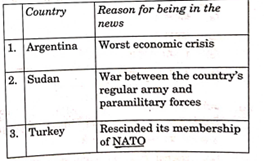
How many of the pairs given above are correctly matched ? (a) Only one pair (b) Only two pairs (c) All three pairs (d) None of the pairs Answer: B Option 1 is correct: Argentina is facing its worst economic crisis.Persistent fiscal deficits and chronic inflation are longstanding issues in Argentina.The inflation rate averaged 190% between 1944 and 2023, and the government defaulted on its sovereign debt nine times (of which three occurred during the past two decades). Source:https://www.thehindu.com/news/international/ argentinas-president-weighs-next-steps-after-economic-reform- bill-setback/article67823967.ece Option 2 is correct: Sudan is facing war between the country’sregular army and paramilitary forces.Clashes erupted after weeks of heightened tensions between the Rapid Support Forces (RSF) and fighting Sudanese Armed Forces in April 2023. Source: https://indianexpress.com/article/explained/ explained-global/why-are-sudans-army-and-paramilitary- forces-fighting-each-other-8559862/#:~:text=Clashes%20erupted%20after%20weeks %20of,to%20civilian%20rule%20in%20Sudan. Option 3 is incorrect: Turkey is still one of the members of NATO and has not withdrawn from the alliance. |
Q. Region of conflict in news
Area of conflict – Country 1. Khartoum – Somalia 2. Saada – Sudan 3. Idlib – Syria How many of the above pairs are correctly matched? a) Only one b) Only two c) All three d) None Answer: A Context: Recently, an airstrike in Sudan’s capital Khartoum killed at least 17 people, including five children, health officials said, as fighting continued between rival generals seeking to control the country. The attack was one of the deadliest of the clashes in urban areas of Khartoum and elsewhere in Sudan between the military and a powerful paramilitary group known as the Rapid Support Forces. Explanation: Given below are correctly matched pairs: Area of conflict – Country Khartoum – Sudan Saada province – Yemen Idlib – Syria |
| Q.88 Consider the following statements:
Statement-I: Sumed pipeline is a strategic route for Persian Gulf oil and natural gas shipments to Europe. Statement-II: Sumed pipeline connects the Red Sea with the Mediterranean Sea. Which one of the following is correct in respect of the above statements? (a) Both Statement-I and Statement-II are correct and Statement-II explains Statement-I (b) Both Statement-I and Statement-II are correct, but Statement-II does not explain Statement-I (c) Statement-I is correct, but Statement-II is incorrect (d) Statement-I is incorrect, but Statement-II is correct Answer: A Statement 1 is correct: The Suez Canal, the SUMED pipeline, and the Bab el-Mandeb Strait are strategic routes for Persian Gulf oil and natural gas shipments to Europe and North America. Total oil shipments via these routes accounted for about 12% of total seaborne-traded oil in the first half of 2023, and liquefied natural gas (LNG) shipments accounted for about 8% of worldwide LNG trade.
Statement 2 is correct: The Suez Canal and SUMED pipeline are located in Egypt and connect the Red Sea with the Mediterranean Sea.
Source: https://www.eia.gov/todayinenergy/detail.php?id=61025 |
DTRS MAGAZINE
Q.’Operation Prosperity Guardian’, seen in the news recently, is aimed at securing which one of the following regions? Red Sea Crimean Peninsula Mexico – USA Border Strait of Malacca Answer: A Context: Shipping companies set to resume Red Sea passage with ‘Operation Prosperity Guardian’ deployment. Explanation: Operation Prosperity Guardian (OPG)-The OPG is a US-led military operation by a predominantlyWestern multi-national coalition formed to respond to Houthi-ledattacks on shipping in the Red Sea.The Houthi attacks, initially focused on supporting Hamas in Gaza,have escalated to target merchant tankers in the Bab el-Mandeb strait. OPG is bringing together multiple countries to include the UK, Bahrain, Canada, France, Italy, Netherlands, Norway, Seychelles and Spain, to jointly address security challenges in the southern Red Sea and the Gulf of Aden, with the goal of ensuring freedom of navigation for all countries and bolstering regional security and prosperity. The operation was announced by the Combined Maritime Force, a multinational naval coalition. India began formal cooperation with the task force in 2022, and was invited to send a naval officer to its headquarters in Bahrain, but it is yet to join. Source: https://www.livemint.com/news/india/india-to-initiate-strict-action-against-red-sea-attackers-rajnath-singh11703616170248.html#:~:text=Singh%20emphasized%20 |
| Q.89 Consider the following statements:
1. The Red Sea receives very little precipitation in any form. 2. No water enters the Red Sea from rivers. Which of the statements given above is/are correct? (a) 1 only (b) 2 only (c) Both 1 and 2 (d) Neither 1 nor 2 Answer: C Explanation: Both the statements are correct Statement 1 is correct: The Red Sea region is characterized by an arid climate, receiving very little precipitation throughout the year. The surrounding areas are mostly deserts, contributing to the low levels of rainfall. Statement 2 is correct: The Red Sea is bordered by arid regions where there are no significant rivers that flow into it. Unlike other seas that might receive fresh water from river inflows, the Red Sea does not have any major rivers draining into it. Source: https://www.unicef.org/sudan/media/8691/file/Red%20Sea.pdf |
| Q.90 According to the Environment Protection Agency (EPA), which one of the following is the largest source of sulphur dioxide emissions?
a) Locomotives using fossil fuels b) Ships using fossil fuels c) Extraction of metals from ores d) Power plants using fossil fuels Answer. D Explanation: The largest source of SO2 in the atmosphere is the burning of fossil fuels by power plants and other industrial facilities. Smaller sources of SO2 emissions include: industrial processes such as extracting metal from ore; natural sources such as volcanoes; and locomotives, ships and other vehicles and heavy equipment that burn fuel with a high sulfur content. Source- Sulfur Dioxide Basics | US EPA; Only 5% of India’s coal power plants meet sulphur dioxide emission norms: CSE – The Hindu |
PT-3 TAKKAR TEST ENVIRONMENT (detailed discussion about SO2 pollution taken during class)
Q. Consider the following statements about Flue-Gas Desulphurisation (FGD): 1. It helps in abating pollution caused due to sulphur dioxide and nitrogen dioxide. 2. Generally, it uses limestone and other high calcium sorbents to capture the pollutants. 3. It is also useful in the production of gypsum. How many of the above statements are correct? a) Only one b) Only two c) All three d) None Answer. C Explanation: Statement 1 is correct: SNOX Flue gas desulfurization removes sulphur dioxide, nitrogen oxides and particulates from flue gases released from thermal power plants. Statements 2 and 3 are correct: FGD systems primarily target the removal of SO₂ from flue gases. They achieve this by using limestone or other alkaline substances to absorb the SO₂, forming gypsum as a by-product. The most common FGD technology uses a limestone/gypsum wet-scrubbing process. The HCl is also dissolved in the water and neutralized, producing a solution of calcium chloride. The gypsum slurry is recovered from the absorber sump and stored or treated for further use (e.g., as plaster board), and fresh limestone is pumped into the absorber to maintain the pH conditions. The remaining gas is reheated. Other FGD technologies include seawater washing, ammonia scrubbing, and a method employing aqueous sodium sulphate solution. DTRS 10 July, 2023 Q. Consider the following gases: 1. Carbon dioxide 2. Sulphur dioxide 3. Nitrogen oxides 4. Carbon monoxide How many of the above pollutants are emitted by the shipping industry? a) Only one b) Only two c) Only three d) All four Ans. D Context: A landmark decision has been taken during the London summit of the International Maritime Organisation (IMO) whereby the member countries of IMO committed their Greenhouse Gas (GHG) strategy to reach net zero by 2050. Thus, adopting the 2023 GHG Strategy is a welcome step towards maritime decarbonisation. |
| Q.91 Consider the following statements:
Statement-1: There is instability and worsening security situation in the Sahel region. Statement-II: There have been military takeovers/coups d’état in several countries of the Sahel region in the recent past. Which one of the following is correct in respect of the above statements? (a) Both Statement-I and Statement-II are correct and Statement-II explains Statement-I (b) Both Statement-I and Statement-II are correct, but Statement-II does not explain Statement-I (c) Statement-I is correct, but Statement-II is incorrect (d) Statement-I is incorrect, but Statement-II is correct Answer: A
Source: https://www.usip.org/publications/2023/08/countering-coups-how-reverse-military-rule-across-sahel |
DTRS MAGAZINE
Q. Consider the following countries: 1. Burkina Faso 2. Mali 3. Niger 4. Libya 5. Eritria How many of the above countries are included in the Sahel region of Africa? a) Only two b) Only three c) Only four d) All five Answer: C Context: The question is based on a write up that is featured in the Down to Earth magazine. The write up talks about the strategic importance of the Sahel region and how global powers are engaging with the region in greater strategic interests of each other. Explanation: Libya is not a part of Sahel region Sahel region: Sahel is a semi-arid region of western and north-central Africa extending from Senegal eastward to Sudan. It forms a transitional zone between the arid Sahara (desert) to the north and the belt of humid savannas to the south. The Sahel part of Africa includes from west to east parts of northern Senegal, southern Mauritania, central Mali, northern Burkina Faso, the extreme south of Algeria, Niger, the extreme north of Nigeria, the extreme north of Cameroon and Central African Republic, central Chad, central and southern Sudan, the extreme north of South Sudan, Eritrea, and the extreme north of Ethiopia.
|
| Q.92 Consider the following statements:
Statement-I: India does not import apples from the United States of America. Statement-II: In India, the law prohibits the import of Genetically Modified food without the approval of the competent authority. Which one of the following is correct in respect of the above statements? (a) Both Statement-I and Statement-II are correct and Statement-II explains Statement-I (b) Both Statement-I and Statement-II are correct, but Statement-II does not explain Statement-I (c) Statement-I is correct, but Statement-II is incorrect (d) Statement-I is incorrect, but Statement-II is correct Answer: D Statement 1 is incorrect: India imports apples from the US. Last year, apple imports from the US increased 40 times in three months till December 2023 after the removal of duty in September 2023. In retaliation for the then-Trump Administration’s decision to revoke India’s trade benefits under the Generalised System of Preferences (GSP) programme in March 2019, New Delhi imposed several retaliatory tariffs on American products, including Apple. An additional 20 percent duty was imposed on Washington Apples. Statement 2 is correct: In India, the law prohibits the import of genetically modified food without the approval of the competent authority, which is the Genetic Engineering Appraisal Committee (GEAC) under MoEFCC. It is authorized to review, monitor and approve all activities of GMO. These activities include import, export, transport, manufacture, use or sale of GMO. Source: https://www.thehindubusinessline.com/economy/agri-business/imports-of-us-apples-rise-40-times-in-3-months-as-india-scraps-retaliatoryduty/article67631576.ece#:~:text=Agri%20Business-,Imports%20of%20US%20apples%20rise%2040%20times%20in,as% 20India%20scraps%20retaliatory%20duty&text=After%20India%20removed%20%E2%80%9Cretaliatory%20import,hopeful%20of%20regaining%20market%20share. https://www.google.com/searchq=which+organisation+in+india+approves+import+of+ggm+crops&rlz=1C1CHBF_enIN1036IN1036&oq=which+organisation+in+india+approves+import+of+ggm+crops&gs_lcrp=EgZjaHJvbWUyCwgAEEUYChg5GKABMgkIARAhGAoYoAEyBwgCECEYnwUyBwgDECEYnwUyBwgEECEYnwUyBwgFECEYnwUyBwgGECEYnwUyBwgHECEYnwXSAQoxNDU5 |
| Q.93 With reference to the Speaker of the Lok Sabha, consider the following statements: While any resolution for the removal of the Speaker of the Lok Sabha is under consideration
1. He/She shall not preside. 2. He/She shall not have the right to speak. 3. He/She shall not be entitled to vote on the resolution in the first instance. Which of the statements given above is/are correct? (a) 1 only (b) 1 and 2 only (c) 2 and 3 only (d) 1, 2 and 3 Answer: A Explanation: Removal of the Speaker of Lok Sabha · Statement 1 is correct: When a resolution for the removal of the Speaker is under consideration of the House, he cannot preside at the sitting of the House, though he may be present. · Statement 2 and 3 are incorrect: He can speak and take part in the proceedings of the House at such a time and vote in the first instance, though not in the case of an equality of votes. |
PT Notes to the students
|
| Q.94 With reference to the Indian Parliament, consider the following statements:
1. A bill pending in the Lok Sabha lapses on its dissolution. 2. A bill passed by the Lok Sabha and pending in the Rajya Sabha lapses on the dissolution of the Lok Sabha. 3. A bill in regard to which the President of India notified his/her intention to summon the Houses to a joint sitting lapses on the dissolution of the Lok Sabha. Which of the statements given above is/are correct? (a) 1 only (b) 1 and 2 (c) 2 and 3 (d) 3 only Answer: B Explanation: The position with respect to lapsing of bills is as follows: 1. A bill pending in the Lok Sabha lapses (whether originating in the Lok Sabha or transmitted to it by the Rajya Sabha). Statement 1 is correct. 2. A bill passed by the Lok Sabha but pending in the Rajya Sabha lapses. Statement 2 is correct. 3. A bill not passed by the two Houses due to disagreement and if the president has notified the holding of a joint sitting before the dissolution of Lok Sabha, does not lapse. Statement 3 is not correct. 4. A bill pending in the Rajya Sabha but not passed by the Lok Sabha does not lapse. 5. A bill passed by both Houses but pending assent of the president does not lapse. 6. A bill passed by both Houses but returned by the president for reconsideration of Houses does not lapse. |
PT Polity notes to students
|
| Q.95 With reference to the Parliament of India, consider the following statements:
1. Prorogation of a House by the President of India does not require the advice of the Council of Ministers. 2. Prorogation of a House is generally done after the House is adjourned sine die but there is no bar to the President of India prorogating the House which is in session. 3. Dissolution of the Lok Sabha is done by the President of India who, save in exceptional circumstances, does so on the advice of the Council of Ministers. Which of the statements given above is/are correct? (a) 1 only (b) 1 and 2 (c) 2 and 3 (d) 3 only Answer: C Explanation: Sessions of Parliament A ‘session’ of Parliament is the period spanning between the first sitting of a House and its prorogation (or dissolution in the case of the Lok Sabha). · Statement 1 is incorrect: Under Article 85(2) of the Constitution, the President may from time to time prorogue Houses or either House of Parliament. The President exercises this power on the recommendation of the Council of Ministers. · Statement 2 is correct: Prorogation normally follows the adjournment of the sitting of the House sine die. However, the President can also prorogue the House while in session. · Statement 3 is correct: President is empowered to dissolve the Lok Sabha in exceptional circumstances on the recommendation of Council of Ministers. |
|
| Q.96 Consider the following statements:
Statement-I: The European Parliament approved The Net-Zero Industry Act recently. Statement-II: The European Union intends to achieve carbon neutrality by 2040 and therefore aims to develop all of its own clean technology by that time. Which one of the following is correct in respect of the above statements? (a) Both Statement-I and Statement-II are correct and Statement-II Statement-I explains (b) Both Statement-I and Statement-II are correct, but Statement-II does not explain Statement-I (c) Statement-I is correct, but Statement-II is incorrect (d) Statement-I is incorrect, but Statement-II is correct Answer: C Statement 1 is correct: The European Parliament approved the Net-Zero industry Act to bolster EU production in technologies needed for decarbonisation in April, 2024. Statement 2 is not correct: The EU aims to be climate-neutral by 2050 – an economy with net-zero greenhouse gas emissions. Source: https://climate.ec.europa.eu/eu-action/climate-strategies-targets/2050-long-term-strategy_en |
|
| Q.97 Consider the following statements:
Statement-I: Recently, Venezuela has achieved a rapid recovery from its economic crisis and in preventing its people from succeeded fleeing/emigrating to other countries. Statement-II: Venezuela has the world’s largest oil reserves. Which one of the following is correct in respect of the above statements? (a) Both Statement-I and Statement-II are correct and Statement-I Statement-II explains (b) Both Statement-I and Statement-II are correct, but Statement-II does not explain Statement-I (c) Statement-I is correct, but Statement-II is incorrect (d) Statement-I is incorrect, but Statement-II is correct Answer: D Statement 1 is not correct: Venezuela has been in a severe socio-political and economic crisis for several years. With an exodus of more than 7.72 million people since 2014, the refugee crisis in Venezuela is the largest displacement crisis in Latin America and one of the largest in the world. Source: https://disasterphilanthropy.org/disasters/venezuelan-refugee-crisis/ Statement 2 is correct: Venezuela has the world’s largest proven crude oil reserves with approximately 303 billion barrels accounting for approximately 17% of global reserves Source: https://www.eia.gov/international/analysis/country/VEN |
DTRS MAGAZINE
Q. Consider the following statements: 1. Venezuela is a founding member of OPEC. 2. Venezuela has the largest proven oil reserves in the world. 3. The Venezuelan crude oil contains low sulphur content. How many of the above statements are correct? a) Only one b) Only two c) All three d) none Ans. B Context- After a gap of over three years, India emerged as the top buyer of Venezuelan crude for two consecutive months of December 2023 and January 2024, as per shipping fixtures and ship tracking data. Indian refiners had stopped oil imports from the Latin American country in 2020 after the United States (US) imposed sanctions on Caracas. With Washington temporarily easing restrictions on Venezuela’s oil sector in October 2023, Indian refiners — mainly Reliance Industries (RIL) — are back in the market. Explanation: Statement 1 is correct: The Organization of the Petroleum Exporting Countries (OPEC) is an organization enabling the co-operation of leading oil-producing countries in order to collectively influence the global oil market and maximize profit. It was founded on 14 September 1960 in Baghdad by the first five members (Iran, Iraq, Kuwait, Saudi Arabia, and Venezuela). The 12 member countries account for an estimated 30 percent of global oil production. Statement 2 is correct: Venezuela is known to lead in the list of countries having the largest proven oil reserves. Please note from the table below- Statement 3 is incorrect: The Venezuelan crude oils are predominantly intermediate base but they tend toward naphthenic properties. About 32 per cent of the production is typically naphthene base. The average sulfur content is high but generally lower than the sulfur content of crude oils of similar low gravities. Most of Venezuela’s petroleum reserves, as much as 77% or possibly more, are composed of the extra-heavy and heavy crude oil found in the Orinoco Belt in the East Venezuela Basin. That heavy and extra-heavy crude oil, most of which is very sour and has an API gravity of 10 degrees or less, is highly carbon-intensive to extract and refine. Source- India emerges as top buyer of Venezuelan crude oil in December, January (indianexpress.com) |
| Q.98 With reference to the Digital India Land Records Modernisation Programme, consider the following statements:
1. To implement the scheme, the Central Government provides 100% funding. 2. Under the Scheme, Cadastral Maps are digitised. 3. An initiative has been undertaken to transliterate the Records of Rights from local language to any of the languages recognized by the Constitution of India. Which of the statements given above are correct? (a) 1 and 2 only (b) 2 and 3 only (c) 1 and 3 only (d) 1, 2 and 3 Answer: D The objective of Digital India Land Records Modernization Programme is to develop a modern, comprehensive and transparent land record management system. Statement 1 is correct: Digital India Land Records Modernization Programme (erstwhile National Land Record Modernization Programme-) was revamped and converted as a Central Sector Scheme with effect from 1st April, 2016 with 100% funding by the Centre. Statement 2 is correct: The scheme involves Digitization of cadastral Maps/FMBs/Tippans, etc. Statement 3 is correct: The Government with the technical support of Centre for Development of Advanced Computing (C-DAC) Pune, has undertaken an initiative to transliterate the Records of Rights available in local language to any of the 22 Schedule VIII languages of the Constitution. 20Programme%20(DILRMP),100%25%20funding%20by%20the%20Centre. |
Takkar Test Series
Q. Consider the following statements: 1. Digital India Land Records Modernization Program is a central sector program aimed at moving from presumptive title to conclusive title. 2. Svamitva scheme is a central sector scheme to provide record of rights to village household owners in rural areas and issue property cards. Which of the statements given above is/are correct? a) 1 only b) 2 only c) Both 1 and 2 d) Neither 1 nor 2 Answer: C Explanation: ● Statement 1 is correct: Digital India Land Records Modernization Programme is a central sector programme aimed at moving from presumptive title(where registration of title does not Simply owner’s title is legally valid) to conclusive title. ● Statement 2 is correct: Svamitva scheme is a central sector scheme to provide record of rights to village household owners in rural areas and issue property cards. Source: Indian Economy, Ramesh Singh |
| Q.99 With reference to the ‘Pradhan Mantri Surakshit Matritva Abhiyan’, consider the following statements:
1. This scheme guarantees a minimum package of antenatal care services to women in their second and third trimesters of pregnancy and six months post-delivery health care service in any government health facility. 2. Under this scheme, private sector health care providers of certain specialities can volunteer to provide services at nearby government health facilities. Which of the statements given above is/are correct? (a) 1 only (b) 2 only (c) Both 1 and 2 (d) Neither 1 nor 2 Answer: B Statement 1 is incorrect: Under the Pradhan Mantri Surakshit Matritva Abhiyan, a minimum package of antenatal care services are provided to pregnant women in their 2nd/ 3rd trimesters of at Government health facilities (PHCs/ CHCs, DHs/ urban health facilities etc) in both urban and rural areas. Post delivery healthcare services are not included under it. Statement 2 is correct: OBGY specialists / Radiologist/ Physicians working in the private sector are encouraged to volunteer for the campaign and provide services at nearby government health facilities. Source: https://nhm.gov.in/index1.php?lang=1&level=3&sublinkid=1308&lid=689 |
DTRS MCQ- 24th March 2023
Q. Direct Benefit Transfer (DBT) is provided under which of the following schemes in India? 1.PM Kisan Yojana 2.PM Atal Pension Yojana 3.PM Krishi Sinchayee Yojana 4.Pradhan Mantri Surakshit Matritva Abhiyan 5.PAHAL scheme Select the correct answer using the code given below: a) 1, 2, 4 and 5 only b) 2, 3 and 4 only c) 1, 2, 3 and 5 only d) 1, 2, 3, 4 and 5 Answer: C Explanation: Context: Under the PM Kisan Yojana scheme, the government will deposit Rs. 2000 into the bank accounts of eligible farmers who have registered and met the program’s eligibility requirements. The beneficiary’s Aadhaar-seeded account receives a straight bank transfer in the form of Direct Benefit Transfer (DBT). PM kisan 14th installment date will be announced soon by the government. • PM Kisan is a Central Sector scheme with 100% funding from the Government of India. Under the scheme, income support of 6,000/- per year in three equal installments will be provided to all land-holding farmer families through direct benefit transfer. So, point 1 is correct. • Atal Pension Yojana (APY) is a pension scheme for citizens of India focused on unorganized sector workers. Under the scheme, a guaranteed minimum pension of Rs. 1,000/- or 2,000/- or 3,000/- or 4,000 or 5,000/- per month will be given at the age of 60 years depending on the contributions by the subscribers. APY is included under the Direct Benefit Transfer (DBT) platform. So, point 2 is correct. • Pradhan Mantri Krishi Sinchayee Yojana was launched in 2015 with the vision of extending the coverage of irrigation ‘Har Khet ko pani’ and improving water use efficiency ‘More crop per drop’. It comes under direct benefit transfer. So, point 3 is correct. • The Pradhan Mantri Surakshit Matritva Abhiyan has been launched by the Ministry of Health & Family Welfare (MoHFW), Government of India. The program aims to provide assured, comprehensive and quality antenatal care, free of cost, universally to all pregnant women on the 9th of every month. Under the campaign, a minimum package of antenatal care services is to be provided to the beneficiaries on the 9th day of every month at the Pradhan Mantri Surakshit Matritva Clinics to ensure that every pregnant woman receives at least one checkup in the 2nd/ 3rd trimester of pregnancy. So, point 4 is incorrect. • Pradhan Mantri Matru Vandana Yojana (PMMVY) is a cash transfer scheme. • The PAHAL aims to reduce diversion and eliminate duplicate or bogus Liquefied Petroleum Gas (LPG) connections. Under the scheme, LPG cylinders are sold at market rates and entitled consumers get the subsidy directly into their bank accounts. So, point 5 is correct. |
| Q.100 With reference to the Pradhan Mantri Shram Yogi Maan-dhan (PM-SYM) Yojana, consider the following statements:
1. The entry age group for enrolment in the scheme is 21 to 40 years. 2. Age specific contribution shall be made by the beneficiary. 3. Each subscriber under the scheme shall receive a minimum pension of ₹ 3,000 per month after attaining the age of 60 years. 4. Family pension is applicable to the spouse and unmarried daughters. Which of the statements given above is/are correct? (a) 1, 3 and 4 (b), 2 and 3 only (c) 2 only (d) 1, 2 and 4 Answer: B The scheme is applicable for the unorganized workers mostly engaged as home based workers, street vendors, mid-day meal workers, head loaders, brick kiln workers, cobblers, rag pickers, domestic workers, washer men, rickshaw pullers, landless laborer’s, own account workers, agricultural workers, construction workers, beedi workers, handloom workers, leather workers, audio- visual workers and similar other occupations whose monthly income is Rs 15,000/ per month or less. Statement 1 is incorrect: The entry age group is 18-40 years. Statement 2 is correct: Age specific contribution by the beneficiary has to be made. Statement 3 is correct: Each subscriber under the PM-SYM, shall receive minimum assured pension of Rs 3000/- per month after attaining the age of 60 years. Statement 4 is incorrect: During the receipt of pension, if the subscriber dies, the spouse of the beneficiary shall be entitled to receive 50% of the pension received by the beneficiary as family pension. Family pension is applicable only to spouse. Source: https://labour.gov.in/pm-sym |
DCA 8th March 2022
|

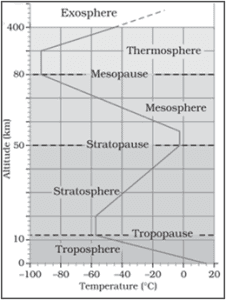
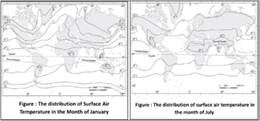
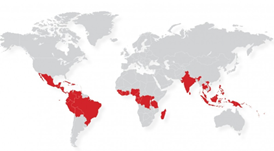
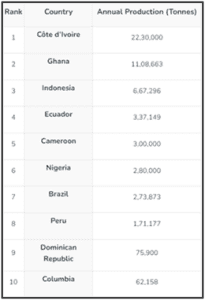
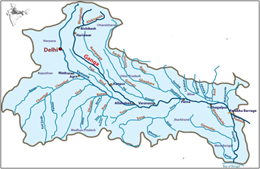
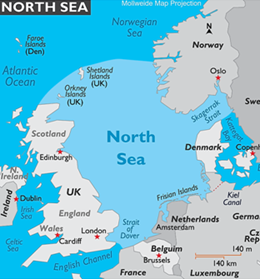
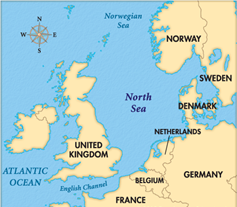
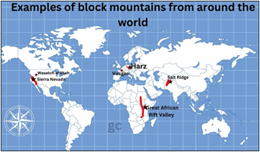
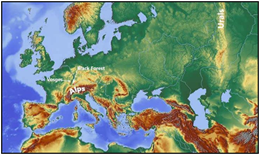
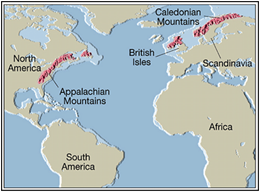
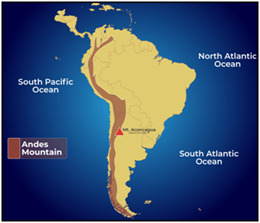



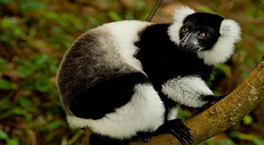

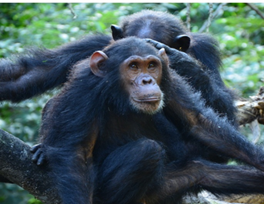
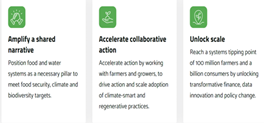
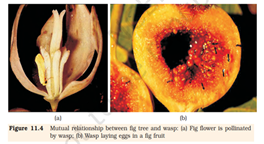
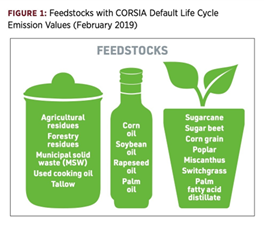
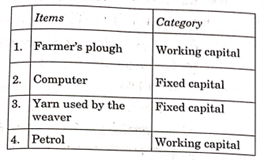 How many of the above pairs are correctly matched?
How many of the above pairs are correctly matched?